Class rules
© andreas lindlhar/team malizia, the fastest monohulls around the globe.
Built using composite materials, IMOCA monohulls are designed to be as light as possible to favour speed, whilst also being fairly solid to withstand the worst possible conditions when racing on the open sea, particularly during the Vendée Globe.

Main criteria for the IMOCA class

30 YEARS OF TECHNICAL INNOVATIONS
These 60-footers really came into being in 1986, during the second edition of the BOC Challenge where five monohulls were reasonably proportioned at 18.28 metres (60 feet). Even back then, the most modern monohulls were already displaying the characteristics of boats designed for the downwind conditions of the Southern Ocean, namely a wide beam and a long waterline.
A few years later, in 1998, canting keels designed to increase the righting moment became the norm and computer systems became increasingly important for retrieving weather forecasts and communicating with land. Essential for singlehanded sailing, autopilots also gradually became more and more 'intelligent'. Hulls and sail plans have also evolved, with boats becoming more powerful and featuring wider sterns and improved performance upwind. Cockpits have also become increasingly well protected, some boats even sporting sliding roof cuddies to protect the manoeuvring area.
The safety requirements imposed by the IMOCA class on both sailors and naval architects have contributed a great deal to the boat’s success. Since 2000, these monohulls have had to prove before a race start that they’re able to right themselves without outside assistance and guarantee they are watertight inside as well as extremely buoyant in the event of capsizing or water ingress. With a minimum of twenty boats at the start of the Vendée Globe since 2000, today IMOCA is the biggest offshore class in the world. Consequently, the history of IMOCA and that of the Vendée Globe are one and the same. Midway through the noughties, foils put in an appearance on the America's Cup multihulls and then very quickly began to grace some of the IMOCA monohulls. These lifting surfaces shaped like Dali moustaches enable the boat to 'plane', skimming over the surface of the water and thus limiting the water resistance and enabling the boat to accelerate quickly. Six foilers took the start of the Vendée Globe 2016-17 (Banque Populiare VIII, Edmond de Rothschild, Hugo Boss, No Way Back, Safran, St-Michel-Virbac and Maître CoQ), two were forced to retire but the four ranked boats topped the final leader board headed by the winner and course record holder, Armel Le Cléac'h (74d 3h 35m 46s).
Since then, the class has opened up the measurement regarding how to trim the foils. As such, they have greater freedom of movement (up and down & fore and aft), stimulating the architects’ creativity all the more. For the Vendée Globe 2020-21, eight new boats will be at the start, all equipped with the latest state-of-the-art foils. Observers believe that the event record might well be beaten by several days… making a circumnavigation of the globe in under 70 days a distinct possibility. From 2021-22, this story will be shared with that of The Ocean Race, a crewed round the world race with stopovers.
ACCESS THE LIST OF OFFICIAL DOCUMENTS Contact the class: [email protected]
Iridium Certus® and Thales VesseLINK: Keeping the Vendée Globe fleet connected and safe
The IMOCA fleet taking on the challenge of the Vendée Globe solo round-the-world race has been fitted with a state-of-the-art satellite communications system, comprised of the Thales VesseLINK and the Iridium Certus serv…
The IMOCA general meeting has chosen the way forward with a full race programme for the 2021-2025 cy…
The IMOCA Class meeting marking the end of the summer holidays was held on Thursday 27th August using virtual technology. This meeting enabled the members of the Class to carry out an early appraisal of what has happened…
Alex Thomson: “The boat is going good”
The word from the English south coast is that the skipper of the latest and most radical HUGO BOSS, is feeling very confident about his programme and his boat leading up to the Vendée Globe.
Charlie Enright: The new Ocean Race calendar gives us more time to make the right choices
Charlie Enright, the co-skipper of 11th Hour Racing, believes the new schedule for The Ocean Race – with the next race due to start in October 2022 – will give his team and rival IMOCA entrants more time to make the best…
- AROUND THE SAILING WORLD
- BOAT OF THE YEAR
- Email Newsletters
- Best Marine Electronics & Technology
- America’s Cup
- St. Petersburg
- Caribbean Championship
- Boating Safety

The New-Generation IMOCA 60s
- By Ed Gorman
- September 20, 2022
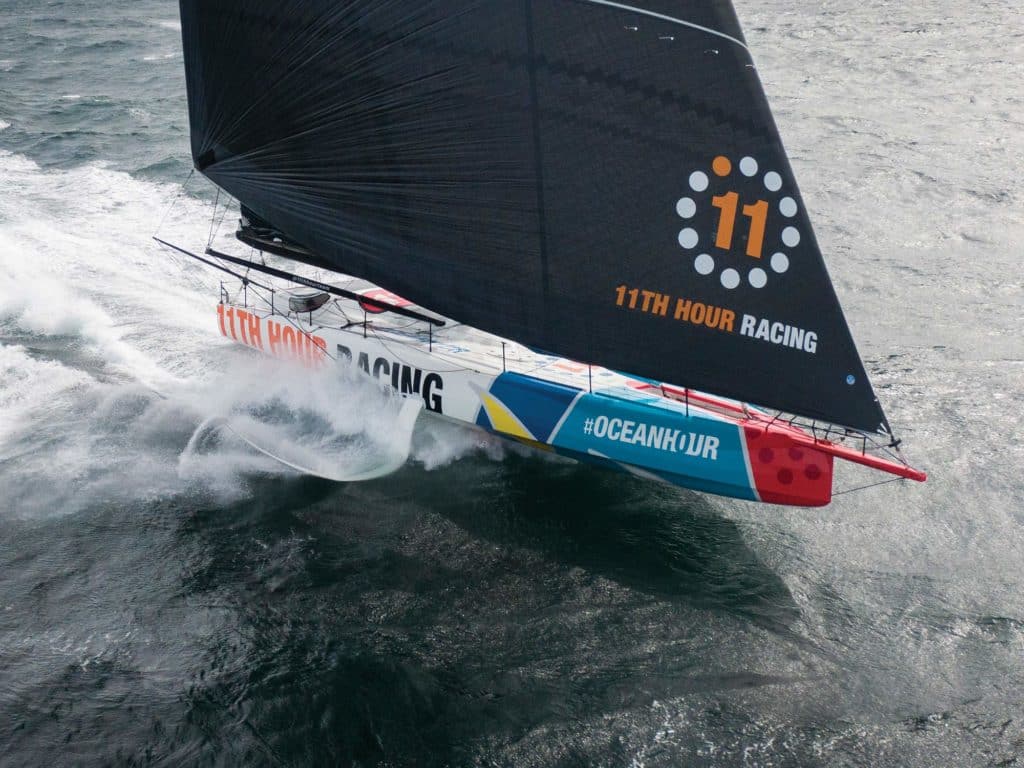
New boats in the IMOCA class are coming out of the sheds thick and fast on the Atlantic coast of France, many of them at the old German World War II U-boat base at Lorient in Brittany. These days, in the fleet made famous by the solo nonstop Vendée Globe round-the-world race, there’s a lot of pizzazz on these occasions. Boats no longer appear and then get quietly lowered into the water. In a class in which millions of euros are being spent on new designs, promotions and messaging, first launches are now previewed by the release of sophisticated video treatments, and the reveals take place with theatrical precision.
It is an astonishing fact in a world teetering on the edge of recession that no less than 14 new IMOCA yachts are hitting the water in the summer of 2022 and into the early months of next year as the arms race in solo offshore sailing gets underway in the buildup to the next Vendée Globe starting in November 2024.
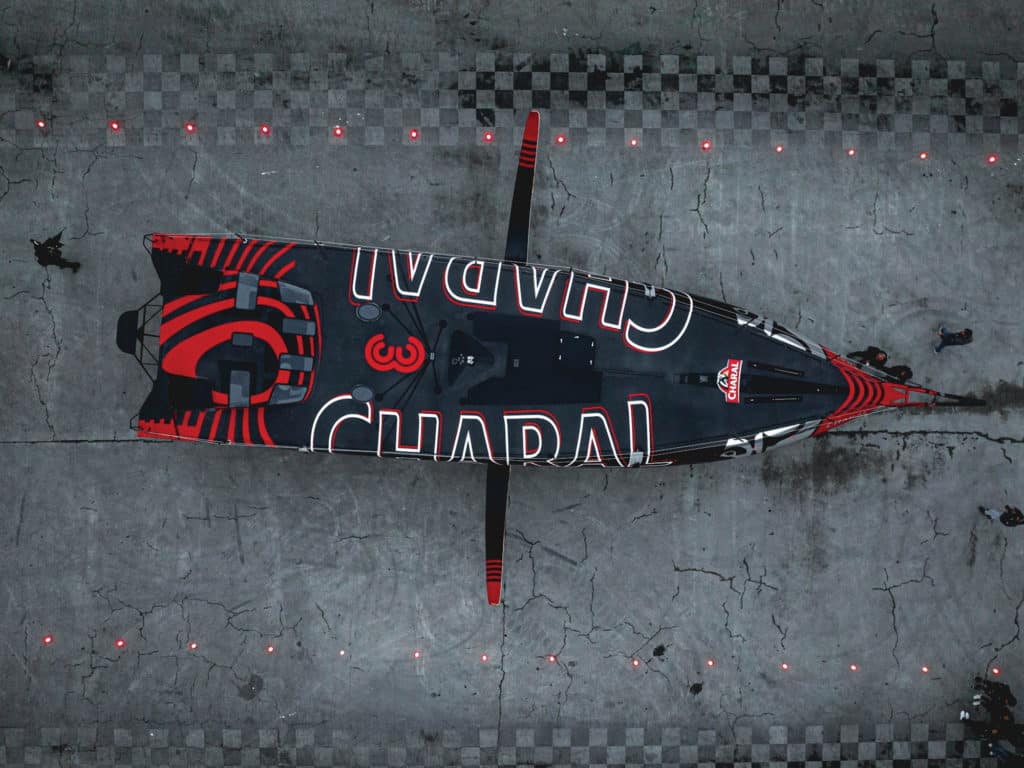
The sorts of commercial partners that are paying for these vessels and their skippers range from French banks to alcohol retailers, meat-products suppliers, chocolate manufacturers, insurance companies and companies organizing behind charitable causes. International sponsors include software businesses, watchmakers, hotel chains and global-logistics multinationals. Unlike the America’s Cup, there’s not a billionaire in sight.
Some of these projects are being done on the cheap, using existing designs, hull molds and other shortcuts. But the top-end packages are now consuming initial budgets in excess of 7 million euros, with average annual operating costs coming in at more than 3 million euros. It’s not for nothing that many observers believe we may now be at “peak IMOCA.”
The class is chock full of interesting personalities, and not all of them are French, in line with the IMOCA policy of trying to broaden its appeal internationally. If you look at the skippers page on the class website, you will see that 19 of the 47 sailors listed are not flying the red, white and blue.
While many of the top performers are based on home soil—stars like Charlie Dalin ( Apivia ), Jérémie Beyou ( Charal 2 ), Kevin Escoffier ( PRB ) and Thomas Ruyant ( LinkedOut )—the growing echelon of foreign skippers includes some serious customers, like Germany’s Boris Herrmann, Britain’s veteran soloist Samantha Davies and the American yachtsman Charlie Enright.
The presence of the latter, the skipper of 11th Hour Racing based out of Newport, Rhode Island, reminds us that IMOCA is expanding on two fronts. Forty sailors will take on the Vendée Globe and many of the solo and doublehanded races in the annual IMOCA Globe Series that lead up to it. But there are up to six boats, 11th Hour Racing among them, that will compete for the first time in the Ocean Race starting next January.
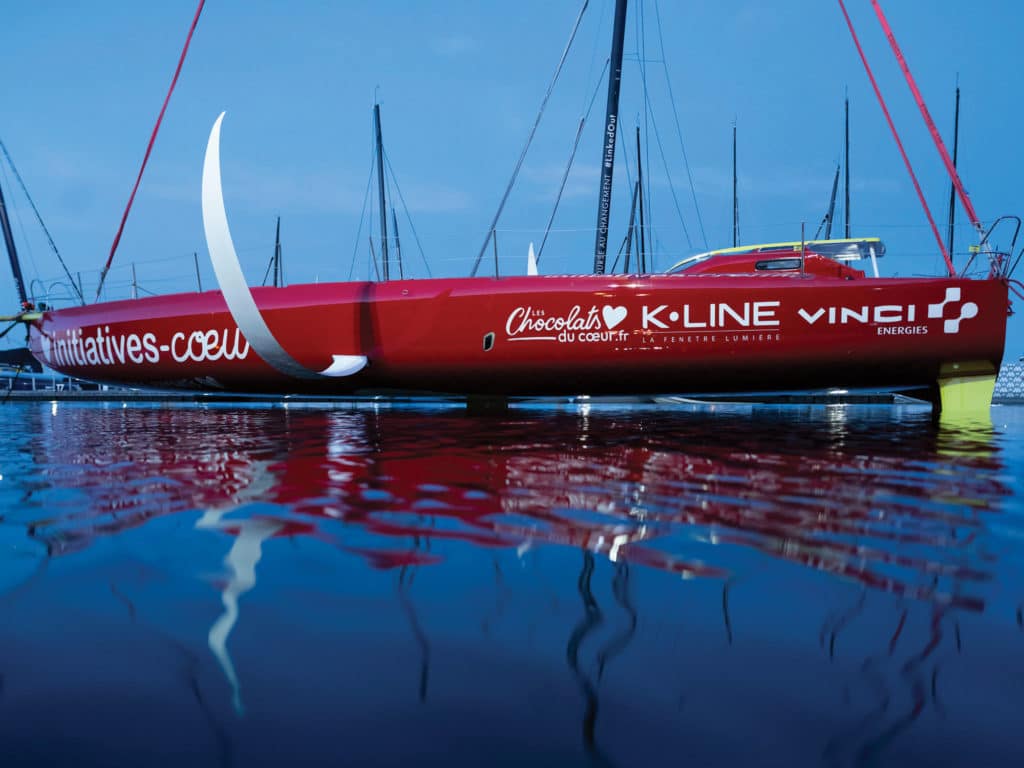
Again, this diversification into fully crewed racing has been led by the class organizers who believe the growing family of commercial partners backing IMOCA sailors will come to see the Ocean Race as a viable option alongside the Vendée Globe in each four-year cycle. The word on the dockside in Lorient is that the class will have taken over the Ocean Race entirely by the next competition by one edition.
So, what’s the secret of all this expansion and growth? One observation would be that IMOCA is prospering at the head of an entire supporting ecosystem of mainly French shorthanded offshore racing. It starts with the Solitaire du Figaro and Mini classes and continues with Class 40s; taken together, they provide a thriving breeding ground for up-and-coming young IMOCA skippers.
Antoine Mermod, the IMOCA class president, says shorthanded offshore sailing is doing well in any case and cites the big growth in doublehanded offshore racing in Europe as evidence for that. But he says IMOCA is also surfing a wave that started during lockdown, when the class hit a sweet spot. Just as the world stopped with the COVID-19 epidemic, its boats were getting ready to take on the Vendée Globe, and they had a captive audience, with up to 20 million people in France alone following the 2020-21 race from home.
“We managed to tell a very nice story, and we saw more people than ever before following the race, so our partners were very happy, and now they are continuing their involvement, and more are arriving to make the class even stronger,” Mermod says. He believes the return on investment for sponsors underwriting IMOCA projects is currently very attractive, and the class is benefitting from its growing international reach.
Top-end packages are now consuming initial budgets in excess of 7 million euros, with average annual operating costs coming in at more than 3 million euros. It’s not for nothing that many observers believe we may now be at “peak IMOCA.”
“We have worked on three different aspects of our communications,” he explains. “One for the public and fans who follow the race. Second is our hospitality program, where we organize events in which people can sail on our boats and live the reality of the sport. And the last aspect is about values. I think our values—sustainability, resilience and teamworking—are very appealing in the corporate world of today and for people generally.”
Mermod is delighted to see America-based partners coming into the class—like 11th Hour and the California company Medallia, which backs the British sailor Pip Hare—but he would like to see more. “Within the next two years, we will be at Newport for the stopover of the Ocean Race and then at New York for the prologue of the Vendée Globe in 2024,” he says. “The US is very important to us as we look forward.”
IMOCAs are governed by a class rule that standardizes some elements, like masts and keels, to keep costs down while allowing development in other areas, like hull shapes and foils. In this latest generation of boats, the emphasis has been on trying to improve downwind performance in big weather, a critical aspect of Vendée Globe racing on the Southern Ocean.
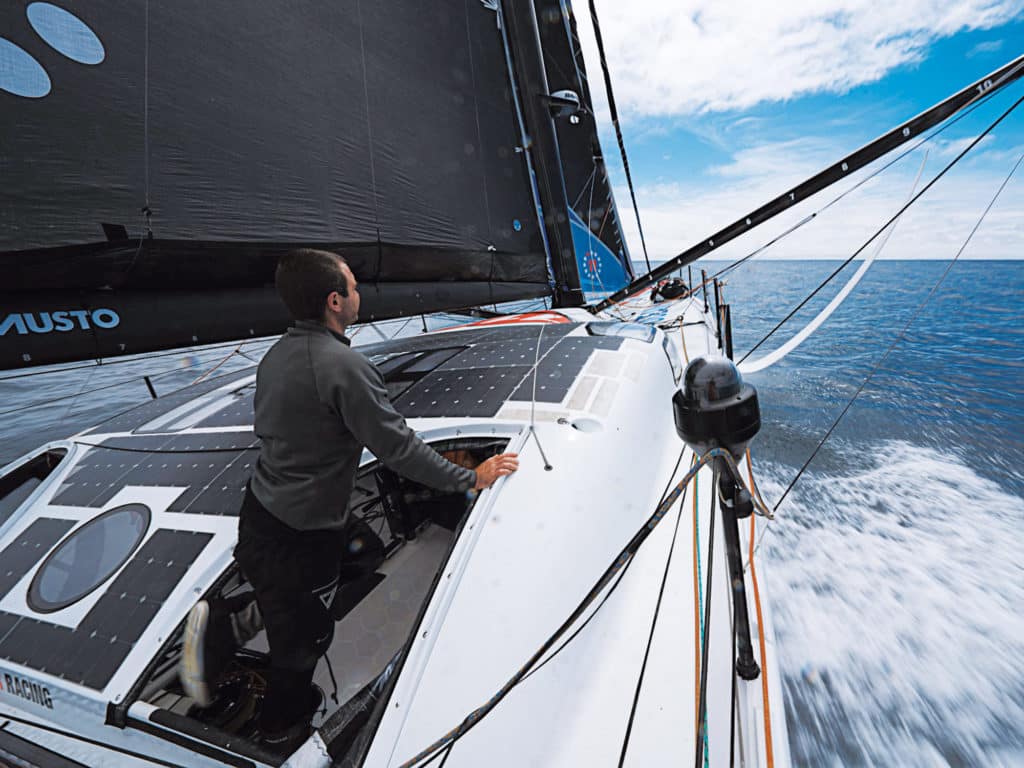
“They have all concentrated on the bows, with various solutions to try to stop the boats ploughing into the back of the wave in front,” explains former LinkedOut team manager Marcus Hutchinson. “When they do that, the old ones can decelerate from 30 knots to 12 to 15 knots in a few seconds, requiring the sailors to retrim and relaunch the thing every time.”
The scow bow favored by French naval architect Sam Manuard, designer of Jérémie Beyou’s Charal 2 and Bureau Vallée (the former L’Occitane En Provence skippered by Louis Burton) is one solution. “The ones with scow bows, or missing bows, are trying to organize it so that the bow knuckle and everything below half-height of the bow isn’t held back by ploughing into the next wave and slowing the boat down,” Hutchinson adds.
The bottom line is that the top speeds of these wild machines, which can hit 35 knots, are not going to change, but average speeds should be significantly higher. The upshot being that, all other things being equal, including the weather and each boat’s reliability, the 74-day record for the Vendée Globe set by Banque Populaire in 2017 should be broken next time round.
The newest boats also continue the trend of trying to protect the sailors, often incorporating enclosed cockpits to help them exist on super-light and super-powerful platforms that become violent, noisy and wet in full-on weather offshore.
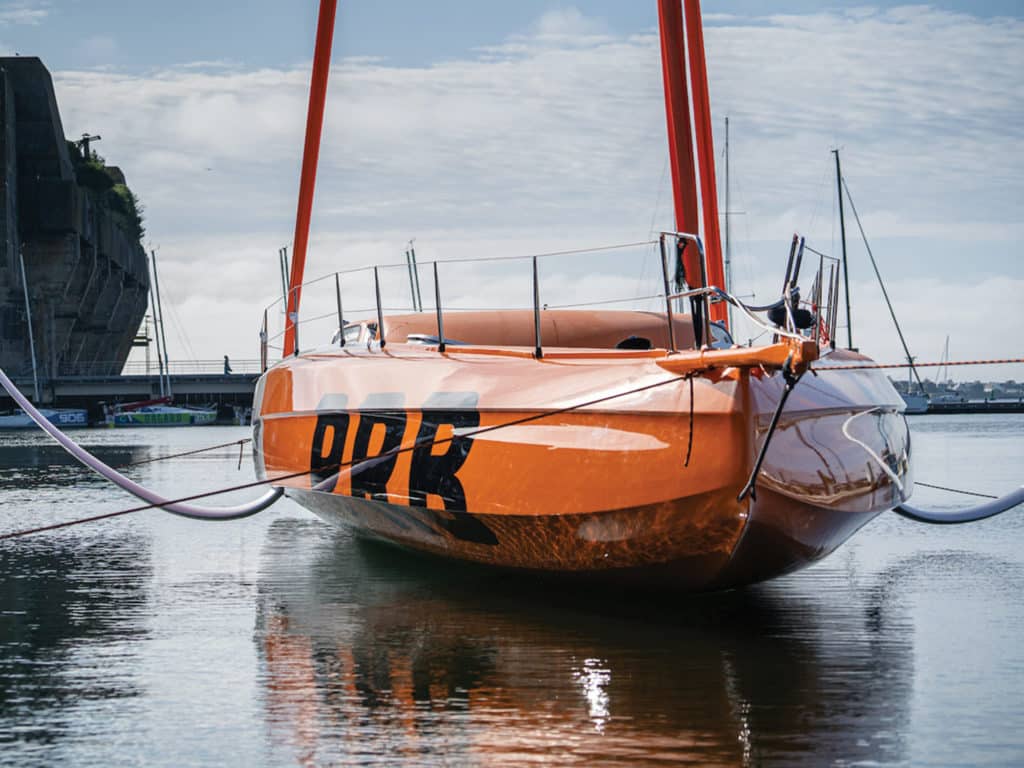
The class is always in flux as new boats come in and the older ones get handed down, producing races within races and different divisions. But it has never been more congested at the top end, with the most aggressive and competitive sailors set to fight it out for supremacy over the next couple of years.
The 38-year-old Frenchman Charlie Dalin, skipper of Apivia , is currently top dog after taking line honors in the last Vendée Globe and winning a series of shorter offshore races, where he showed his consummate skill as both a soloist and fleet racer. But the battle to get ahead of him is going to be fascinating. Dalin will have a new Guillaume Verdier-designed boat of his own to bring up to speed next year, but so will his main rivals—among them Beyou and Kevin Escoffier, a hugely experienced, technically minded offshore racer. Also in the mix will be the winner of the last Vendée Globe on corrected time, Yannick Bestaven, on a new Maître Coq .
But there will be plenty of others to keep an eye on, not least Frenchman Maxime Sorel, a former winner in Class 40s, who has a stunning-looking new V and B-Monbana-Mayenne , and Sam Davies in her new Initiatives-Coeur , another Manuard design.
The coming big race is the solo Route du Rhum-Destination Guadeloupe from St. Malo to the Caribbean, starting in early November. This will see many of the latest boats make their debut on the transatlantic course. It’s going to be an interesting watch as the newest foilers are tested in the heat of battle for the first time. Past experience suggests some of them will complete the course, but some may well encounter early teething troubles as they begin their long march to the Vendée Globe starting line.
- More: IMOCA , Print Fall 2022 , Racing
- More Racing
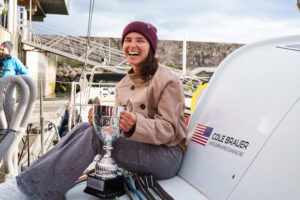
Brauer Sails into Hearts, Minds and History
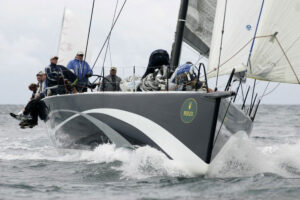
Anticipation and Temptation
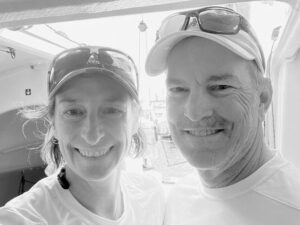
America’s Offshore Couple
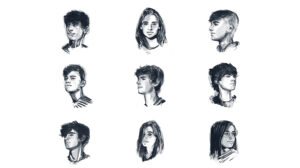
Jobson All-Star Juniors 2024: The Fast Generation

Wingfoiling Gear: A Beginner’s Guide
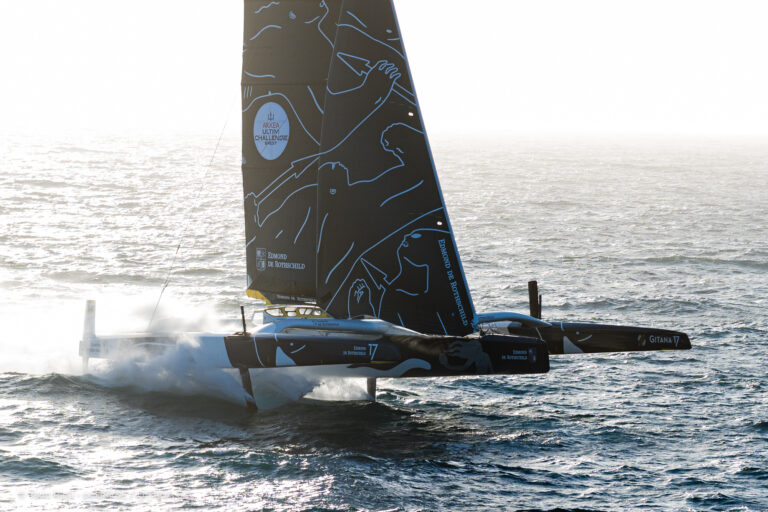
Caudrelier Wins Round-the-World Solo Sprint

- Digital Edition
- Customer Service
- Privacy Policy
- Terms of Use
- Cruising World
- Florida Travel + Life
- Sailing World
- Salt Water Sportsman
- Sport Fishing
- Wakeboarding
Open 60 : What makes the Imocas class so special
Andreas Fritsch
, Jochen Rieker
· 05.11.2023

An Imoca 60 can be characterised by a few key figures. Its hull length is limited to 18.28 metres, which corresponds to the 60 feet indicated by its type designation. With bowsprit, it must not exceed 20.12 metres. The width is also limited to a maximum of 5.85 metres. But these are just three of a multitude of other limits.
To prevent an arms race, the mast may only reach up to 29 metres into the sky and the keel a maximum depth of 4.50 metres. The ballast, whose minimum and maximum weight is also specified, can be swivelled to the side electro-hydraulically in order to use the weight more effectively. Even the angle is limited: up to 38 degrees to starboard or port, not one degree more.
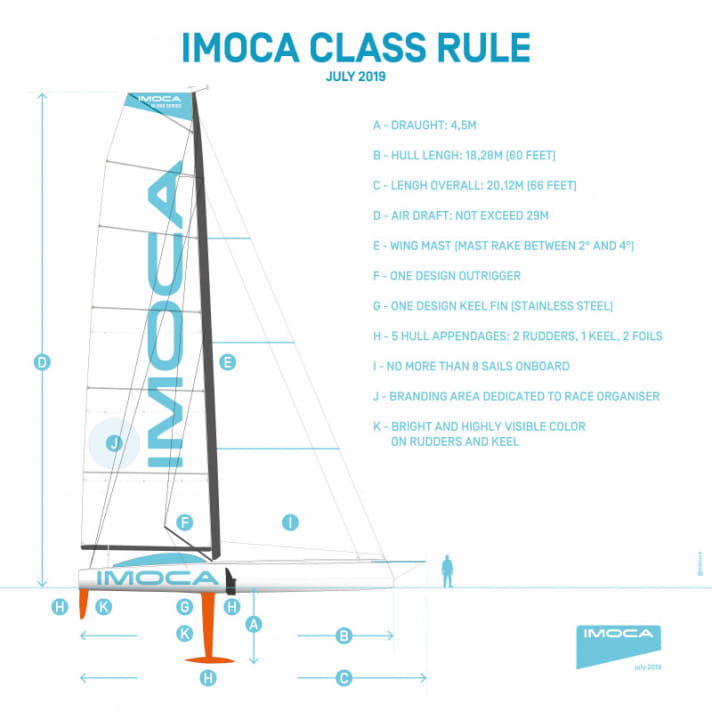
20,000 to 35,000 working hours go into the development of a top boat, around 40,000 to 50,000 hours into its construction
In addition to the keel, an Imoca may use a maximum of four other attachments under water. In the latest designs, these are two rudders aft and two foils amidships - hydrofoils that lift the boat out of the sea at a speed of 12 to 14 knots, thereby helping to reduce water resistance.
Most read articles
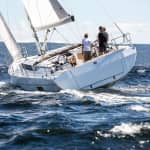
These and other parameters are regulated by the class so that man and machine do not become a danger to themselves. Otherwise, designers, boat builders and skippers are relatively free in the design of the racing yachts. This is also what makes them so appealing - and their reputation as one of the most innovative classes of all.
In the beginning, before the first race in 1989, the technical rules were extremely simple. There were hardly any requirements. As a result, the International Monohull Open Class Association (Imoca for short) quickly became a haven for free spirits. This is still the case today, even if the degrees of freedom have been repeatedly restricted in recent years.
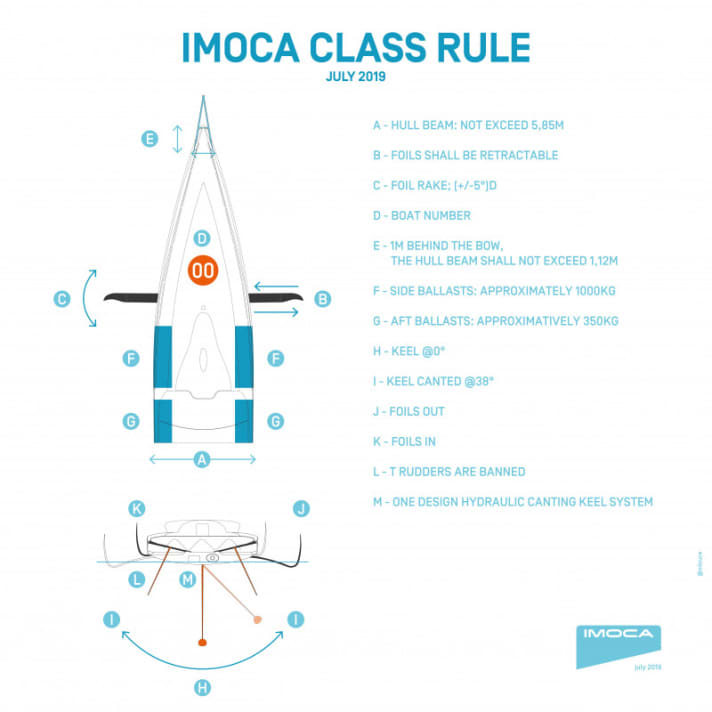
The design rules are an expression of a complex, sometimes erratic development. When almost anything was still permitted, there was a technical arms race at the end of the 1990s and beginning of the 2000s that pushed designs ever closer to their physical limits, sometimes even beyond them.
As a result, spectacular failures became more frequent: Extremely narrow keel fins laminated from carbon fibre tore off, carrying ballast bodies weighing several tonnes at their ends, some of which were made from materials as exotic as tungsten. Masts broke in rows as they were designed to be lighter and lighter in order to develop less leverage. As the boats became increasingly wider and the superstructures ever flatter, some constructions remained keel up after capsizing, even in heavy seas. Several maritime emergencies forced skippers to be rescued by nearby competitors, helicopters or even naval vessels.
The "Ecureuil-d'Aquitaine", the first boat to win the Vendée, weighed 13 tonnes. Today's foilers come in at 8 to 9 tonnes
Another consequence of this inventiveness was a huge explosion in costs and an exorbitant drop in the value of boats from previous generations - neither of which was conducive to keeping the class attractive for less well-financed teams. Dizzying budgets in the millions combined with the growing risk of technical failures made it increasingly difficult for many skippers to find sponsors.
In order to mitigate these two trends, the Imoca class association, on whose committees the skippers have the say, but where designers, experienced team managers and marketing specialists also have a voice, gradually adopted new rules in a pioneering process from 2008 to 2013. Their aim: to enable innovation while avoiding excesses.
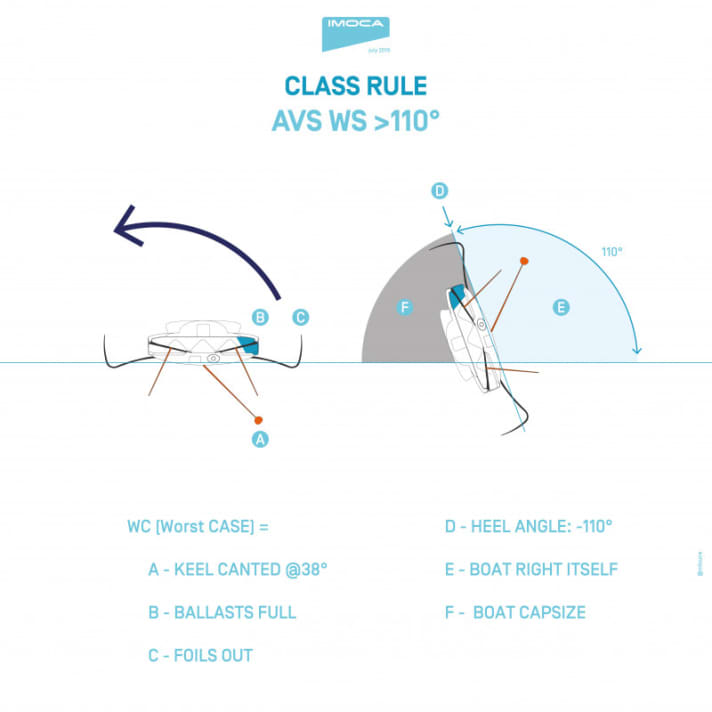
The members therefore decided to intervene at the design stage in future. To reduce costs, a standardised mast, a standardised keel and the necessary hydraulics were decided in 2013. In addition, they agreed on keel fins made of forged steel with a lead bomb, probably the safest and most durable solution to date.
A new Imoca building with foils costs 5-7 million
And yet: While a normal cruising sailor considers the keel of his yacht to be the most stable component that will last the life of the boat without grounding and hardly needs any attention, the underwater appendages of the Open-60s have to be regularly dismantled and serviced. They undergo extensive sonic or even X-ray examinations to check for the slightest damage to ensure that skipper and boat can sail as safely as possible. Nevertheless, there are always failures, at least in the hydraulics for tilting the keels, which is why all newer boats must have a device for fixing the keel in the neutral position.
In order to solve the problem of yachts drifting upwards after capsizing, it was decided that the ships must right themselves up to an angle of 110 degrees. To do this, they undergo an elaborate test procedure:
The large teams have 35-50 permanent employees for the construction of a boat.
After completion, all new Imocas, including Boris Herrmann's "Malizia - Seaexplorer", are moored in the harbour basin with the rig upright and brought into a lateral position by a crane until the mast is horizontal above the water surface, at 90 degrees to the vertical. Electronic tension scales then statically measure how high the righting moment is at the top of the mast. Computer simulations are then used to determine other safety parameters that are important for approval. This and the subsequent calculations take several days. The shape of the hull and deck is also taken into account - this is one of the reasons why "Malizia" has a superstructure that extends all the way aft; this is intended to support the turning of the hull after capsizing and thus helps to save weight in the keel bomb.
There are also many other requirements set by the class. For example, the number of sails that can be on board during an Imoca regatta is limited: no more than eight sails are permitted. Even the maximum mast drop is limited. After the Vendée Globe 2020/21, it was regulated to between 2 and 6 degrees, which is intended to help minimise the bow dropping in the Southern Ocean when the boats are sailing at high speed into the back of large waves.
- We explain the sails of the Imocas in detail here
The same applies to the water ballast systems. Previously, some teams had up to eight trim tanks, which could be filled in seconds using valves while travelling. Now there are a maximum of six. The reason for this is that filling the tanks upwind causes the boat to develop a lot of additional righting moment, which can overload the structure and the single mast. The stern tanks are filled for room sheet courses where the wind blows from astern in order to lift the bow out of the swell via the leverage effect and prevent it from diving away.
The hydraulic cylinder of the tilting keel can withstand 40 tonnes of pressure
However, the foils have been the centre of attention since 2015. This is now the fourth generation of aerofoils, narrower and more expansive than before. There is a dimensionless upper limit for the area calculation that must be adhered to. However, the designers have come up with impressive and very different shapes.
They catapult the Imocas into a whole new realm. Even the 2020 generation sailed around 50 per cent faster than the Open 60 monohulls from 2015/16 in optimal conditions - with half the wind and flat seas - an unprecedented gain in ocean racing. Speeds of 25 to 35 knots are then possible.
And there is no end in sight. Because now the designs will start flying even earlier, and they should also stay on the foils longer in rougher seas. Boris Herrmann hopes to raise the average speed in the Southern Ocean from 18 to 22 knots. For the first time, a non-stop circumnavigation of the globe in less than 70 days seems possible - provided the boats and skippers can keep up the sometimes extreme pace right to the finish line.
The IMOCA members could not resist the temptation to optimise and further develop this new, exciting technology. After the brute performance of the boats had to be reined in for a long time, and after the previous generation of foilers had to undergo major structural improvements, it now looks as if a new evolutionary stage has been reached: flying earlier, longer, faster. Once again, the class underlines why it has such a legendary reputation - for being the world's most high-bred racing yachts on the offshore scene!
- To the class rules and the IMOCA page
Limit dimensions of an Imoca
- Depth: 4.5 m max.
- Torso length: 18.28 m max. (60 ft.)
- Overall length with bowsprit: 20.12 m max. (66 ft.)
- Mast height: 29 m max.
- Profile mast: Carbon fibre wing profile, rotatable, maximum aft tilt adjustable from 2 to 6 degrees, one-design component
- Deckssaling: Carbon fibre, one-design component
- Keel fin: Steel, one-design component.
- Bomb: Lead, weight between 2.2 and 2.85 tonnes
- Underwater attachments: maximum 5 - 2 rudders (foldable), 1 keel (swivelling), 2 foils (retractable and rotatable)
- Sail: maximum 8 pieces, one mainsail, 7 headsails, aramid fibre laminates
- Colour: Rudder and keel in signal colours so that the ship can be seen more easily by rescue services when floating upwind in a storm
More about Boris Herrmann and the "Malizia - Seaexplorer":
- Virtual tour of Boris Herrmann's " Malizia - Seaexplorer "
- The sails of the Imocas explained in detail
Most read in category Regatta

IMOCA 60 Hugo Boss
As with the Charal, the boat uses the next generation foiling configuration and designed by VPLP in partnership with Alex Thomson. This boat is constructed entirely in carbon fiber and equipped with the latest technology. The sailing boat’s beam is reduced to a minimum and the forward section was designed to be more aero-hydrodynamic, this boat is truly built for speed. The boat holds the current speed record of 38.5 knots.
IMOCA 60 Malizia II
The boat is designed by VPLP and Guillaume Verdier and built at the Multiplast yard. This is the sailing boat that transported the climate activist Greta Thunberg across the Atlantic. The boat is equipped with a high-volume bow which enhances the speed of the boat by making her more lightweight.
The Ocean Race
In the upcoming Ocean Race, IMOCA 60 boats have been invited to participate in the competition. Based on the success of the next generation foiling monohulled boats in the Vendée Globe competition, this will be an exciting new change in the Ocean Race vs the traditional VO65 boats used in the past edition of the Volvo Ocean Race.
Boating Forum: https://www.boatingglobal.com/boat-forum/
Contact us: https://www.boatingglobal.com/contact/
https://www.vendeeglobe.org/en
11th Hour Racing unveils IMOCA 60
Published on August 9th, 2021 by Editor -->
After 24 months of research, development, and construction, 11th Hour Racing Team has unveiled its new IMOCA 60, the first of a new era of boats designed to compete in fully crewed, short-handed and solo offshore sailboat races.
With the U.S. sponsored program focused on The Ocean Race 2022-23, the team sees this as a new era for the 60-foot class which previously had been designed specifically for shorthanded sailing.
A product of Guillaume Verdier’s design studio and built at CDK Technologies in the home of offshore yacht racing in Brittany, France, the new IMOCA 60 blends sporting performance with sustainable construction practices, and state-of-the-art boat building technology.
Where IMOCA 60s are traditionally designed for the typical downwind course of the solo Vendée Globe, the 11th Hour Racing Team boat has been optimized for the broader range of conditions expected in The Ocean Race which will cross the equator four times.

The first impression is of a hull with a super-slick aero treatment with a scow-type profile to its bow, a pronounced chine, and with a large and almost completely enclosed cockpit with minimal side decks.
The closed cockpit design will allow up to five sailors to live and work under the protection of its cover for the majority of time spent offshore with near-360 degree visibility. The boat is further enhanced via a refined auto-pilot, navigation system, cameras, and marine mammal deterrence system.
The cockpit layout and the layout down below has been designed to allow a full crew to work together during maneuvers with enough space to do so efficiently. Verdier says the boat, which features more winches than recent IMOCAs, feels far more spacious than all other boats in the class.
“It is not hugely different,” he said. “But there is a little more functionality. There are more winches and a bit more room – you will be surprised how spacious it is. It looks like a big boat when you are inside and it feels like a much bigger boat than the other IMOCAs.” Skipper Charlie Enright was excited about the launch: “We’ve designed a version of the IMOCA 60 that no one has ever built before. Our boat should be able to withstand the toughest conditions in the most remote corners of the world, but is also able to compete in various shorthanded configurations.
“Hopefully the hull shape is an evolution of the good work Guillaume has already done. I think we will see a foil package that is pretty radical and different to a lot of other boats out there today.
Enright said the foil package included the ability to draw the foils in when not required so that, when the hull is upright, they are clear of the water. “There are some boats that are still dragging part of their foils in the water when fully retracted at zero degrees of heel. It was important to us that this was not the case, but we can’t get rid of the whole things.
“I hope we’ve got the big things right – hull shape, foils, aero package – all that. The detail, as it relates to the fully crewed stuff, are pretty unproven. The cockpit volume, the cockpit layout, the crew mechanics and ergonomics certainly played a big part in it.”
The bow profile is all about trying to keep the boat clear of the water. “We are trying to keep the bow up and out of the water while we are VMG running, but trying not to lose the power in the waterline length and the reaching ability that has made Guillaume so successful in the past,” explained Enright.

The goal was to produce an IMOCA that can be competitive in a range of conditions. “We were not designing the boat for the Vendée Globe, so we have tried to make it an all-round boat basically,” continued Enright. “You only have to start and finish the Vendée once each race, whereas throughout the course of an Ocean Race you have 10 starts and 10 finishes.”
Another area where the boat is different is in the stacking system, something Enright remarked on. The design seems to have thought-through ways to make moving dead weight around easier. “We have also emphasized the stacking system,” he said, “the ability to move weight, not only left and right but fore and aft.”
Verdier also emphasizes the versatility of this boat. “I hope there will be more (like it),” he said. “It’s a smart way to go. I hope it will open the door to the Ocean Race. It’s smart because if you use it single-handed, you just remove a winch or two, some hydraulics or whatever and you remove a bit of weight and on you go…you’ve got nearly as strong a boat and you’ve got more space.”
Talking to both Enright and Verdier, you sense a huge amount of work has gone into this project. Take, for example, the sail wardrobe, where the team has carried out detailed work on sail crossovers, sail weight and sail structures. The net effect, they hope, is a boat that proves hard to match, whether raced fully-crewed or short-handed.
The boat’s race schedule includes the upcoming Défi Azimut (raced double-handed with a non-sailing onboard media crew member), the Transat Jacques Vabre (double-handed), and The Ocean Race 2022-23 (four sailors and one sailing onboard media crew member).
Leading up to the new boat’s naming ceremony scheduled for September 13, 11th Hour Racing Team will release a series of content features, including videos and photos, giving detailed insight into the new IMOCA 60’s unique design, artwork, and innovation processes.
Source: 11th Hour Racing Team, IMOCA
Event details – Route – Teams – Facebook
Here was the plan prior to the 2022-23 postponement: The Ocean Race 2021-22 (formerly The Volvo Ocean Race) will be raced in two classes of boats: the high-performance, foiling, IMOCA 60 class and the one-design VO65 class which has been used for the last two editions of the race. Entries in the IMOCA 60 class will compete for The Ocean Race trophy, while those racing the VO65s will chase the Ocean Challenge Trophy.
Ten Stopovers for 14th Edition: • Alicante, Spain : This historic Mediterranean port will host the start for the fifth consecutive edition in the autumn of 2021.
• Cabo Verde : More accustomed to having offshore teams sail by, or stop for repair, this archipelago of ten volcanic islands in the central Atlantic Ocean will become just the second African venue the race has ever visited and the first West African nation to host the event. Details .
• Cape Town, South Africa : Located on the shore of Table Bay, Cape Town, as the oldest urban area in South Africa, was developed by the United East India Company (VOC) as a supply station for Dutch ships sailing to East Africa, India, and the Far East. Located at latitude 33.55° S, it’s approximately the same as Sydney and Buenos Aires and equivalent to Casablanca and Los Angeles in the northern hemisphere. Details .
• Shenzhen, China : Located in the southeast, the city is a modern metropolis that links Hong Kong to China’s mainland. It’s known for its shopping destinations and features contemporary buildings, such as the 600m-tall skyscraper Ping An International Finance Centre, and a number of amusement parks. The city is a leading global technology hub and was one of the fastest-growing cities in the world in the 1990s and the 2000s. Details .
• Auckland, New Zealand : European, Polynesian, Asian, and strong Maori heritages give Auckland its distinctive culture. Located in the North Island of New Zealand, it is the most populous urban area in the country with an urban population of around 1,570,100. Details .
• Itajaí, Brazil : To the south of Rio de Janeiro, Itajaí was founded in the mid-19th century by German and Italian colonists, and is now the commercial centre and Atlantic port for an agricultural region drained by the Itajaí River and its tributaries. Details .
• Newport, USA : Located on Aquidneck Island, Newport is 74 miles south of Boston and 180 miles northeast of New York City. It is known as a New England summer resort and is famous for its historic mansions and its rich sailing history. It was the location of every challenge to the America’s Cup between 1930 and 1983. It is also the home of Naval Station Newport, which houses the United States Naval War College, the Naval Undersea Warfare Center, and an important Navy training center. This is the third consecutive edition of the race to stop in Newport. Details .
• Aarhus, Denmark : The course comes to the east coast of the Jutland peninsula during the spring of 2022, following a popular ‘Fly-By’ of the city during the final leg of the 2017-18 edition of the Race. Details .
• The Hague, Netherlands : This city along the North Sea coast will welcome the race for a third consecutive time, first coming as a ‘pitstop’ on the final leg of the 2014-15 edition and as the final finish port for the 2017-18 race. Details .
• Genoa, Italy : As the birthplace of Christopher Columbus, this first-time race host is Italy’s largest sea port yet remains full of grandeur as the gateway to the Riviera while offering weighty architectural heritage. Details .
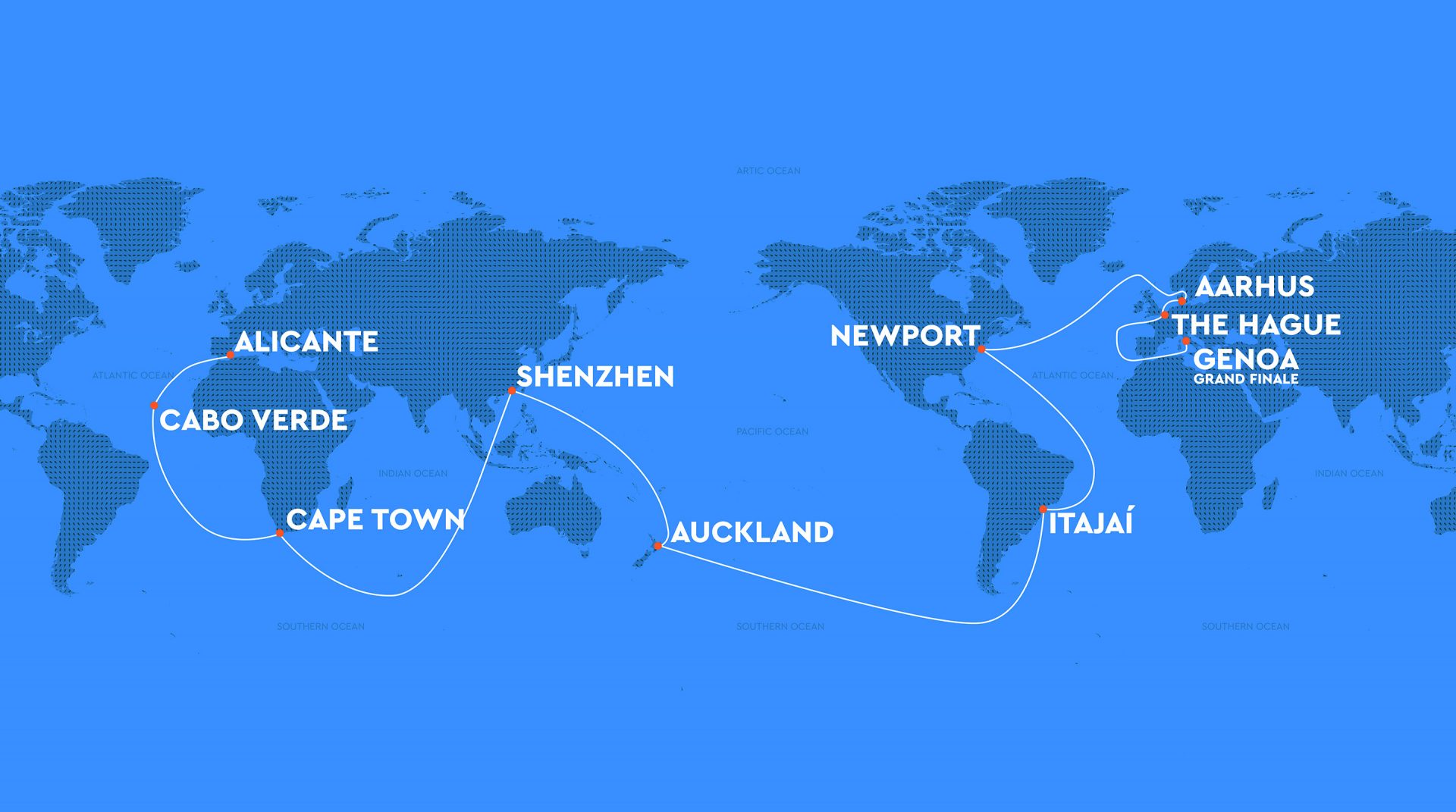
Tags: 11th Hour Racing Team , The Ocean Race
Related Posts

Pirates in the Indian Ocean →

The Ocean Race Europe begins in Kiel →

Challenges, triumphs, and team spirit →

To become a sustainable sports team →
© 2024 Scuttlebutt Sailing News. Inbox Communications, Inc. All Rights Reserved. made by VSSL Agency .
- Privacy Statement
- Advertise With Us
Get Your Sailing News Fix!
Your download by email.
- Your Name...
- Your Email... *
- Comments This field is for validation purposes and should be left unchanged.


Next Gen IMOCA 60 racing yacht: CHARAL
- August 26th, 2018
- Sailing Yacht
Last week has seen a boat launch of the superlatives. The long expected new design of renown bureau VPLP and the much anticipated “re-definition” of IMOCA 60-class racing yachts has hit the waters. The all new CHARAL by French Charal sailing team under the command of pro-skipper Jeremie Beyou had her roll out from the yard´s construction site at CDK technologies of Port-de-la-Foret near Quimper at the French Atlantic coast.

And since the pictures had been published the sailing world went nuts over the design. Let´s have a closer look at Beyou´s racing yacht. It is an IMOCA 60 boat constructed under the rules of the class, VPLP has been briefed by Jeremie Beyou to try a completely new approach: “The boat has been designed solely around the new foils”, states naval architect Daniele Capua of VPLP design: “We wanted to take another step forward compared to the old IMOCA-designs.” And judging from the pictures: They were successful!

Jeremie Beywou is a pro-skipper born back in 1976. He is no rookie to the scene: He has been finishing third in the last Vendeé Globe in MAITRE COQ and it is no exaggeration calling him a star of French solo sailing. He is indeed a three time winner of renown French Solitaire du Figaro-series and Just arrived back from this year´s Volvo Ocean Race edition aboard DONGFENG as Watch Captain. Now he tackles another Vendeé Globe and the new CHARAL is his weapon of choice.

The boat is made by CDK Technologies, a special purpose company that owns one of Europe´s bigges autoclaves. They are specialized in high-tech composite materials and such the perfect choice for making CHARAL – the most advanced IMOCA 60 monohull to date. Other than her predecessors in the class which had been retrofitted with foils, CHARAL has been made just to support the foils: “We chose to make foils that are strong to get a maximum power and lift for the foiling effect.“, says Beyou.

He adds: „The shaft is very long as is the tip and has a double surface and angled elbow, which highlights the visual impact. They are reasonably thick too because we are going to put quite a lot of arching pressure on the tips. If the boat appears really wide, it is because we can’t raise both foils at the same time: One of them will always be lowered.“ The strong angular design, the almost thin appeal of the wide stern and of course the new bow-design are the most dramatic changes of classic IMOCA-designs.
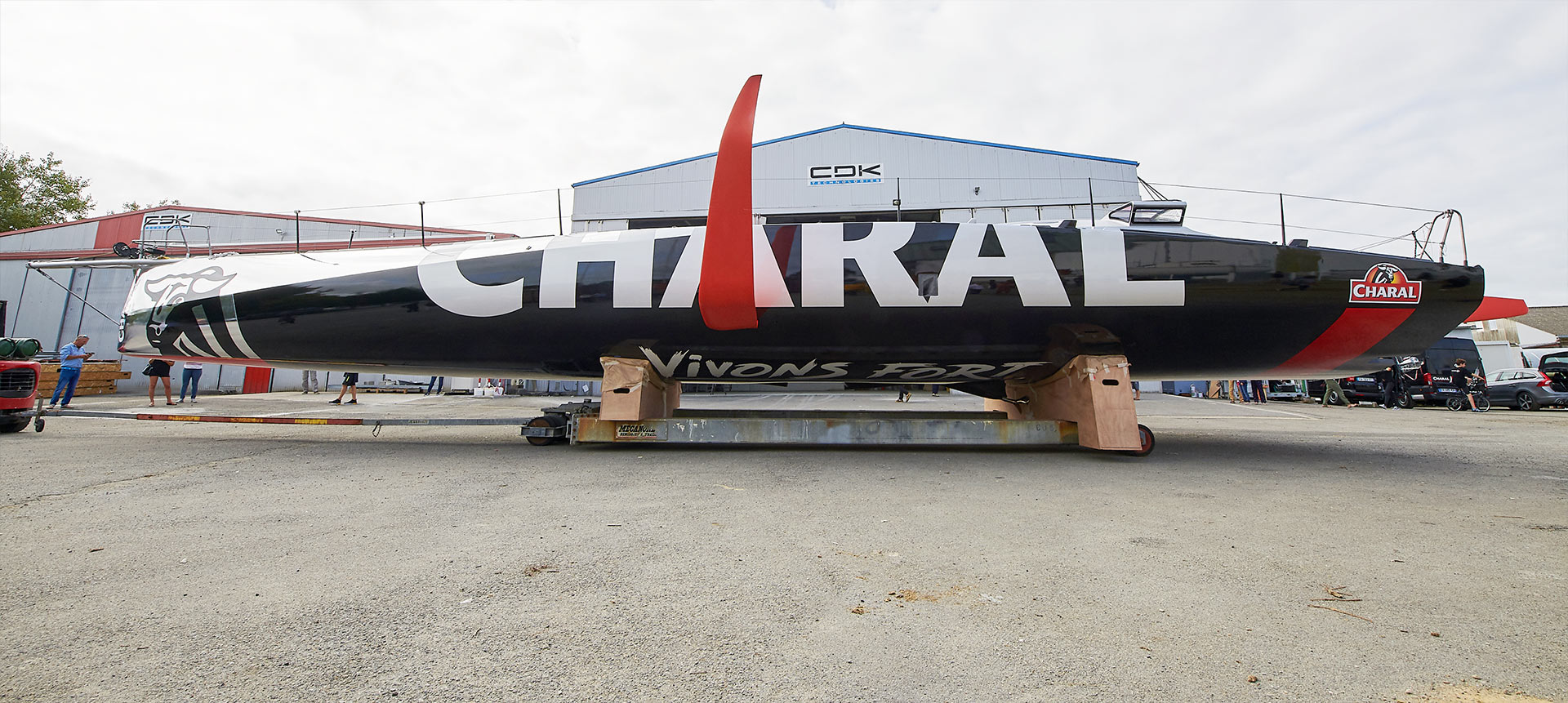
Knowing that the class rules for the hull design doesn’t allow the boat in the end to come out of water for a full flight, the idea was to squeeze out maximum power generated by the massive foils and reduce drag as much as possible: “This means we have a very innovative hull with a Dreadnaught bow that is rounded and with a closed transom.”, specifies Beyou.

Looking at the pictures we are getting an idea of the efforts put into CHARAL´s conception: Just look at those massive foils and the comparatively thin (but hopefully strong) canting keel. Another key aspects are mentioned by Beyou: “The transom is completely different to anything we have seen before in the IMOCA class. The bow has had a lot streamlining to reduce the amount of carbon and gain on weight. We have pushed the boundaries to the maximum with one exception, allowing me room to maneouver on the foredeck.”

As CHARAL was hitting the water finally, the whole crew of the sailing team was in full celebration mode. She is a beauty and a beast in one person, one could say. But it is not just her outward appearance that is new and partially revolutionary, as one of the VPLP-designers puts out: “Jeremie’s brief put both the living and work areas was very specific. It became apparent that his wishes would affect the centre of gravity and so we had to adapt. We have now designed a boat where the skipper can spend the part of time in the cockpit and virtually reach everything without moving: The winches, the helm, the chart table and the galley. The idea is to go below the least amount of times needed. Jeremie will be outside permanently but in a protected area from both the wind and the water thanks to the non-retractable coach roof.” Imagine this prospect in the Roaring Fourties …

Controlling a racing yacht like this single handed is a huge task. Controlling this boat at speeds of around 40 knots in seas like these found in the permanent violent turmoil of the Souther Oceans is something that for most of us is inconceivable. Jeremie Beyou has added another component to CHARAL that should make her unique: “All elements supporting important loads – the rig, the appendages – has sensors with optic fibre sending back information in real time to my navigation console to then be treated by software that gives me the right reading of the situation. However, unlike in Formula 1 car racing, this information is not relayed to shore. I am the only one who can access this and therefore am then able to act manually as needed.”

It is a tempting boat, a sexy beast and one could not wish for a better sponsor of the project as the Charal company, a French manufacturer of high quality beef. This “beefy” yacht will now be brought to full life: All equipment will be installed and the boat gets rigged. Jeremie and his dedicated team will bring the boat to Lorient where the base of the team is situated and prepare the yacht for serious racing. Although: “We know that the boat that goes in the water today is not the boat that will be racing on the Vendée Globe. We have two years to make this IMOCA, the first to be designed for and around foils, a real rocket ship for the Vendée Globe.” We wish them all the best – and I promise, next time I´ll be around in LA BASE in Lorient, I will knock at sailing team CHARAL´s doors …
Love racing yachts? Try these articles:
Solo sailing an IMOCA 60 : Interview with Lizzy Foreman
Most sexy racing yacht to date: Mark Mills Vismara V62 SUPERNIKKA
Lorient´s LA BASE – the heart of French yacht racing
Pictures with kind permission by and under the copyright (c) of Yvan Zedda / ALeA / Charal
- Boats for Sale
New and used IMOCA 60 boats for sale
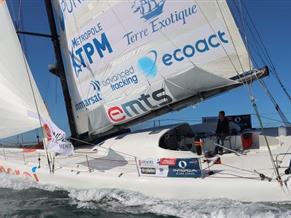
Search all our new or used IMOCA 60 for sale. We have IMOCA 60 brokers and sellers from around the world at great prices.
Sign up to our newsletter
By submitting this form, you agree to our Privacy & Cookie Policy

Change units of measure
This feature requires cookies to be enabled on your browser.
Show price in:
Show lengths, beam and draft in:
Show displacement or weight in:
Show capacity or volume in:
Show speed in:
Show distance in:

July 1, 2023 - 4 PM CET
Genoa In-Port race starts in
IMOCA 60 ALAKA’I
Record-setting imoca 60.
A first-generation foiling IMOCA 60 that set the single-handed 24-hour record and came second in the 2016 Vendée Globe has been our training boat since 2019
co-skippers
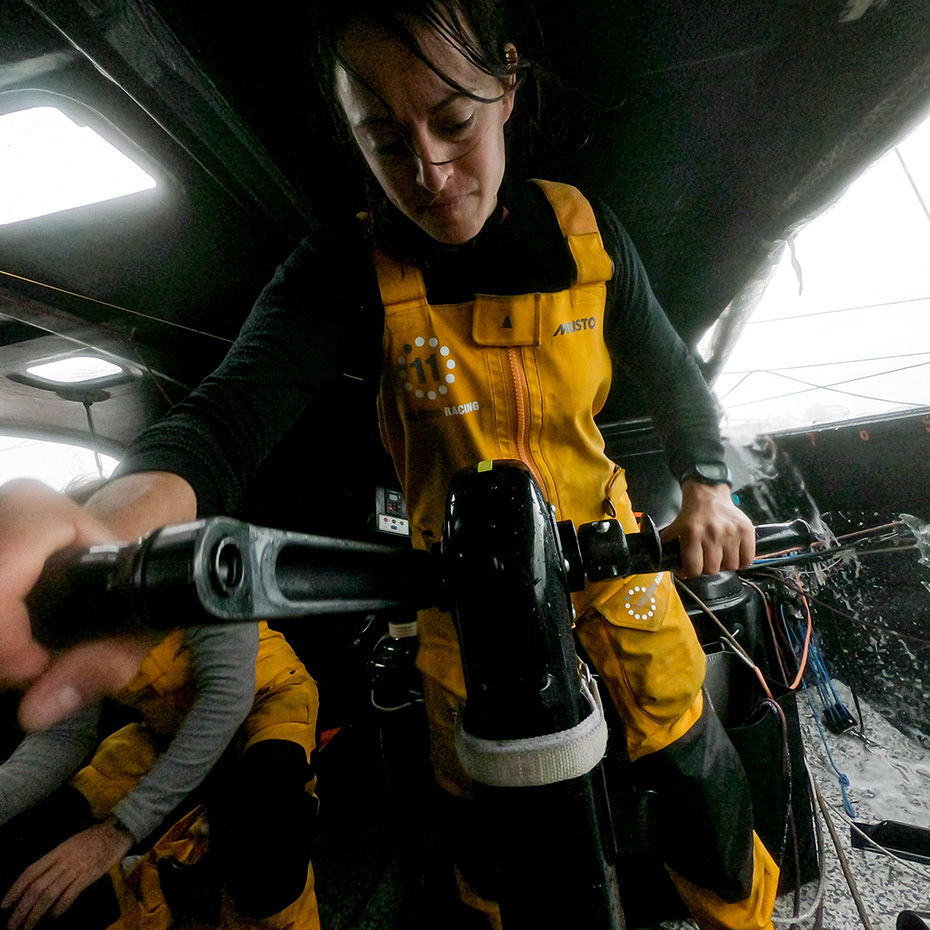
JUSTINE METTRAUX
SIMON FISHER
racing schedule
The ocean race europe .
Alicante, Spain
THE ROLEX FASTNET RACE
Defi azimut.
Lorient, France
TRANSAT JACQUES VABRE
Le Havre, France
features / specs
Launch year, mast height, hull length, max working sail area, ropes onboard, a foiling machine.
The IMOCA 60 Class is an ‘open’ design, measurement-controlled class – allowing designers freedom within the rules. Latest generation boats have foils, which dramatically increase the speed of the boat as it ‘skims’ over the water’s surface.
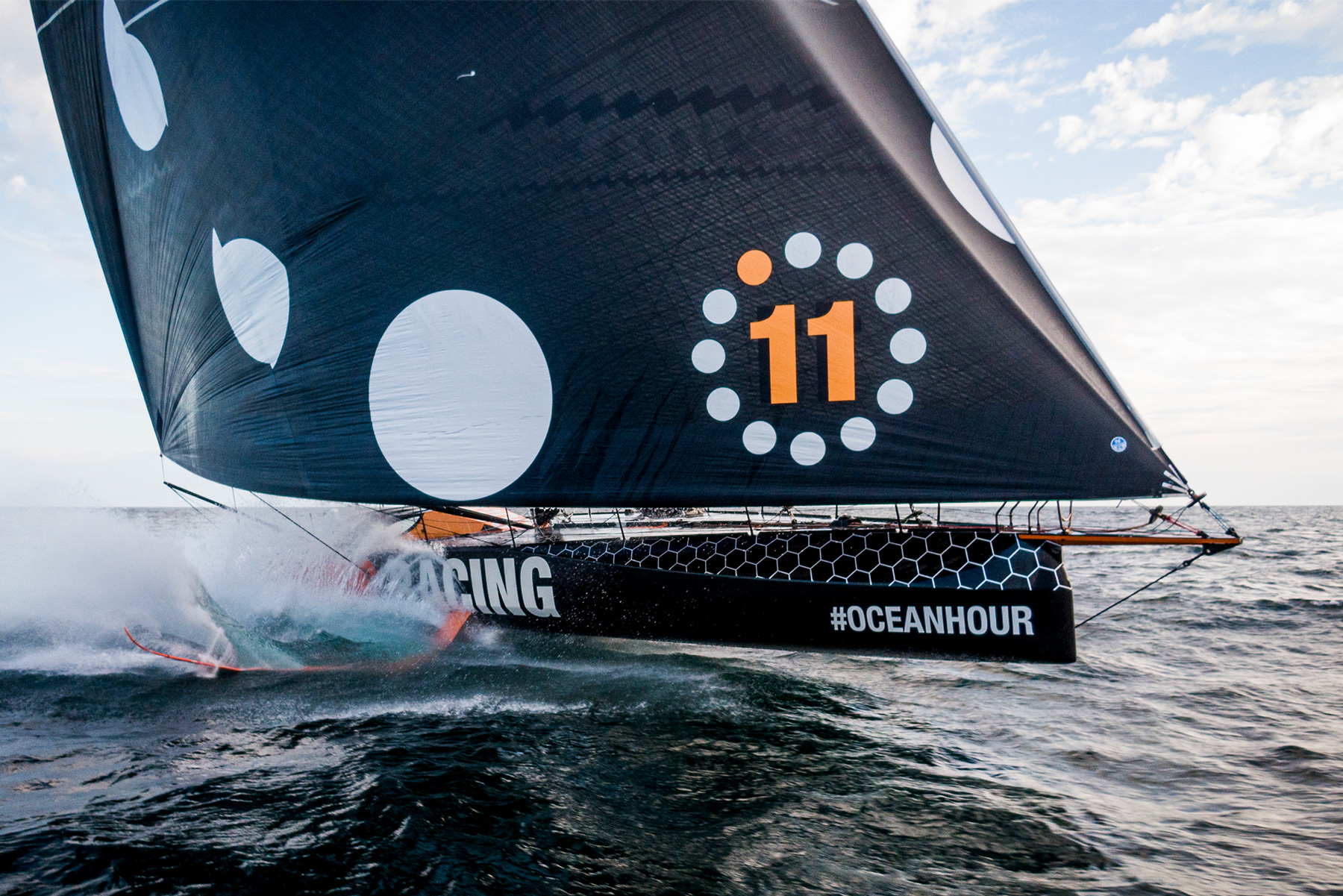
The Cockpit
The heart of the action onboard, where the sailors ‘work’ the boat – driving with the tiller, trimming the sails, and adjusting the foils. The cockpit houses the electronics and navigation equipment providing data about the performance of the boat.
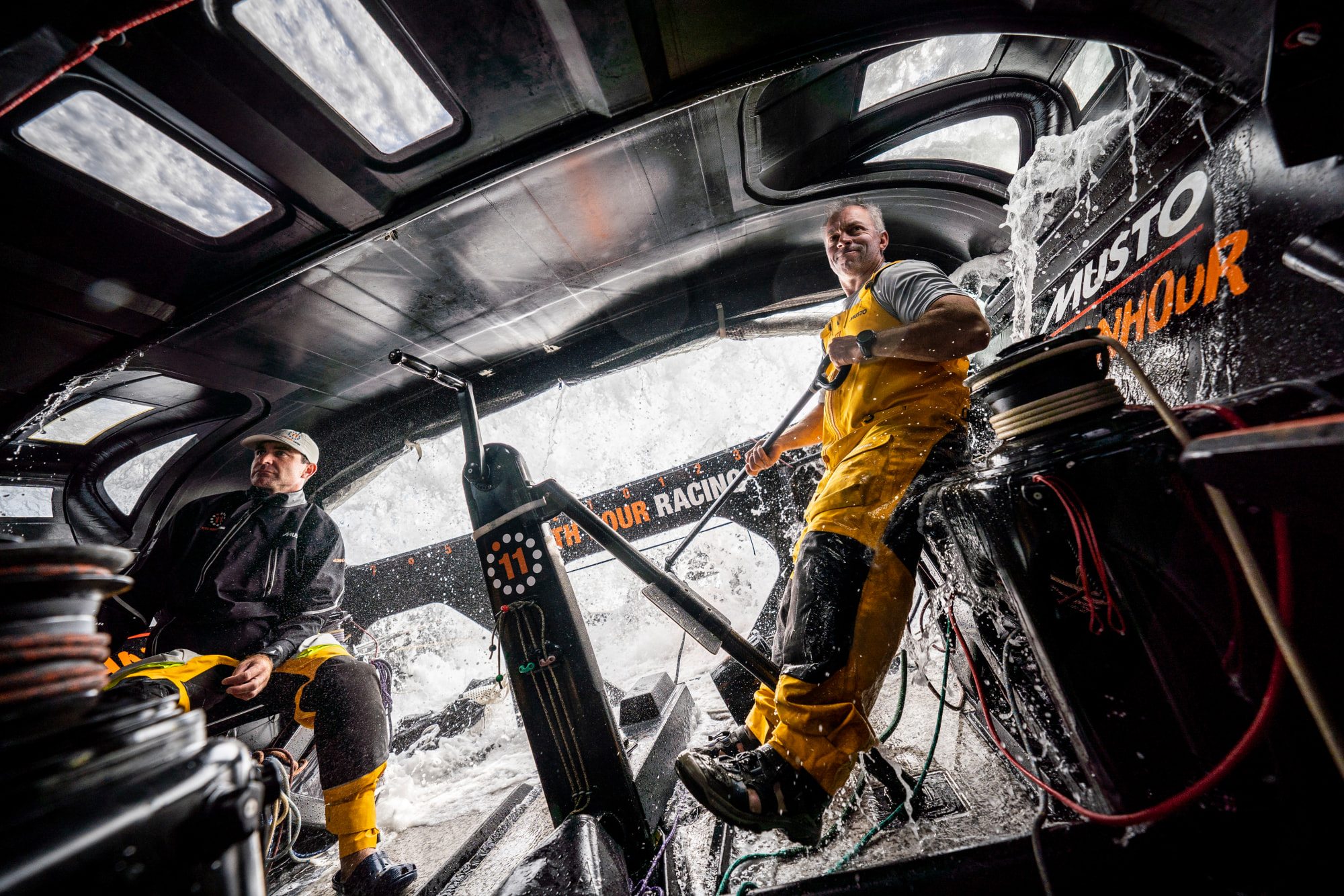
Life below deck
Originally designed for single-handed sailing, this IMOCA 60 has been totally revamped to create living space for four sailors and a media crew member. It’s stripped back to the very basics: it’s noisy and creature comforts are a rare luxury.
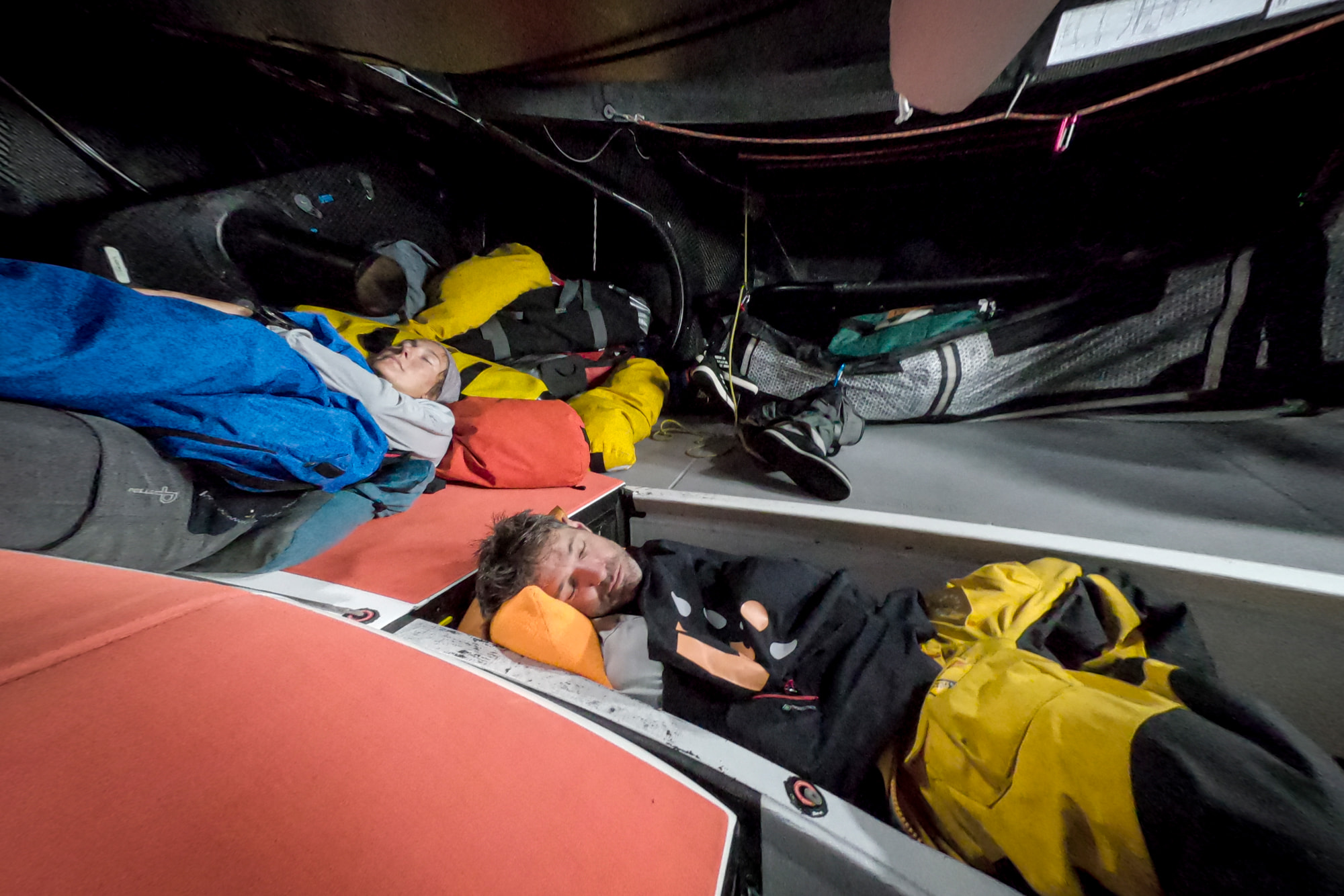
Science & sustainability
In addition to participating in The Ocean Race’s onboard science program our dedicated sustainability team is constantly innovating and testing sustainable solutions to leave a positive environmental impact in our wake.
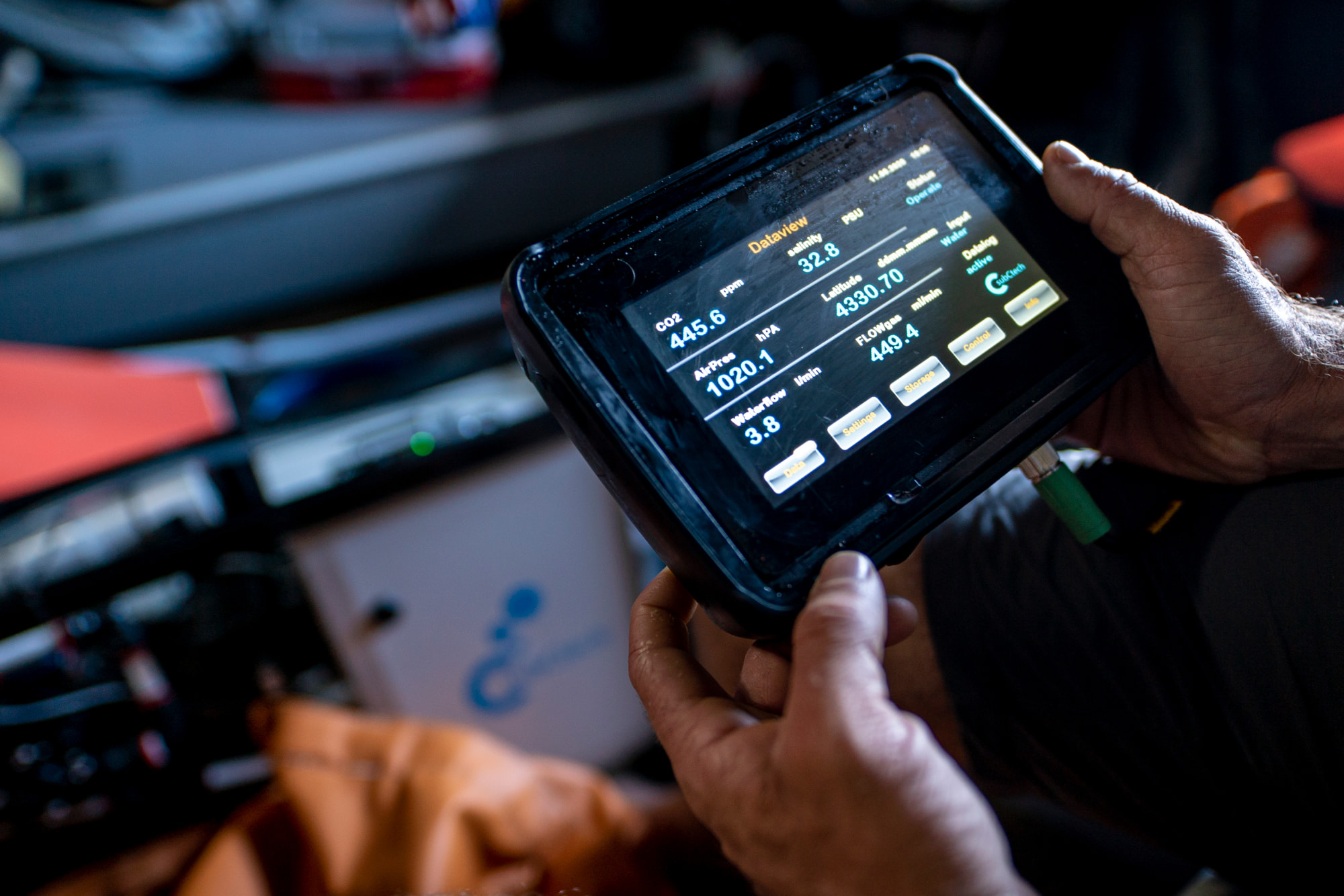
IMOCA 60 MĀLAMA built for crewed racing
Check out our brand new IMOCA 60 – one-of-a-kind, state of the art, launching July 2021.
Related News
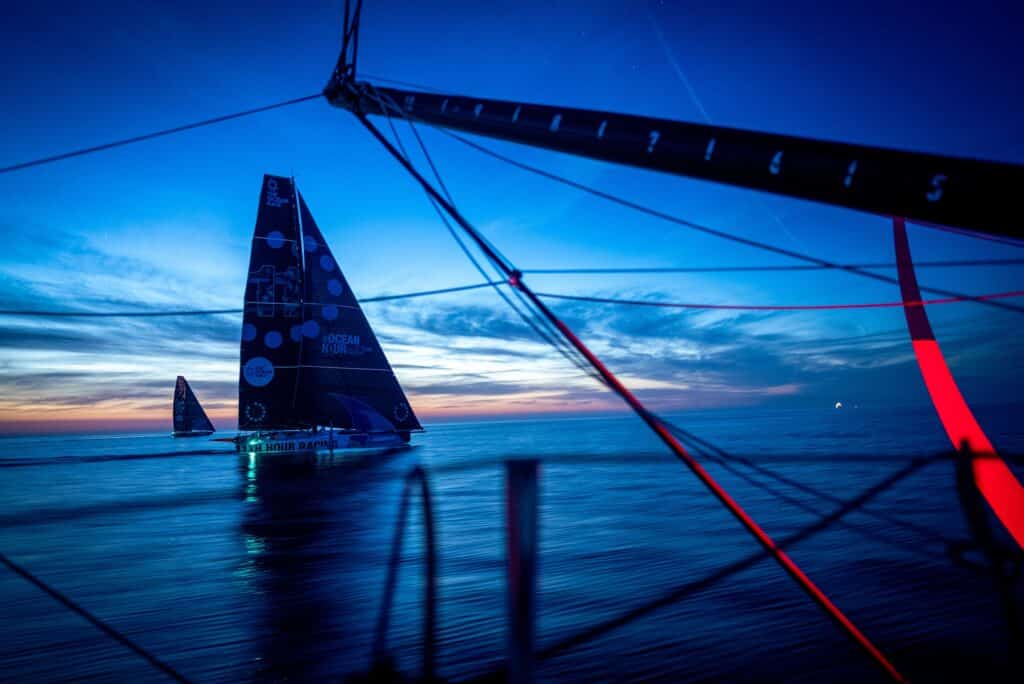
December 21, 2023
THE OCEAN RACE 2022-23 LEG BY LEG RECAP
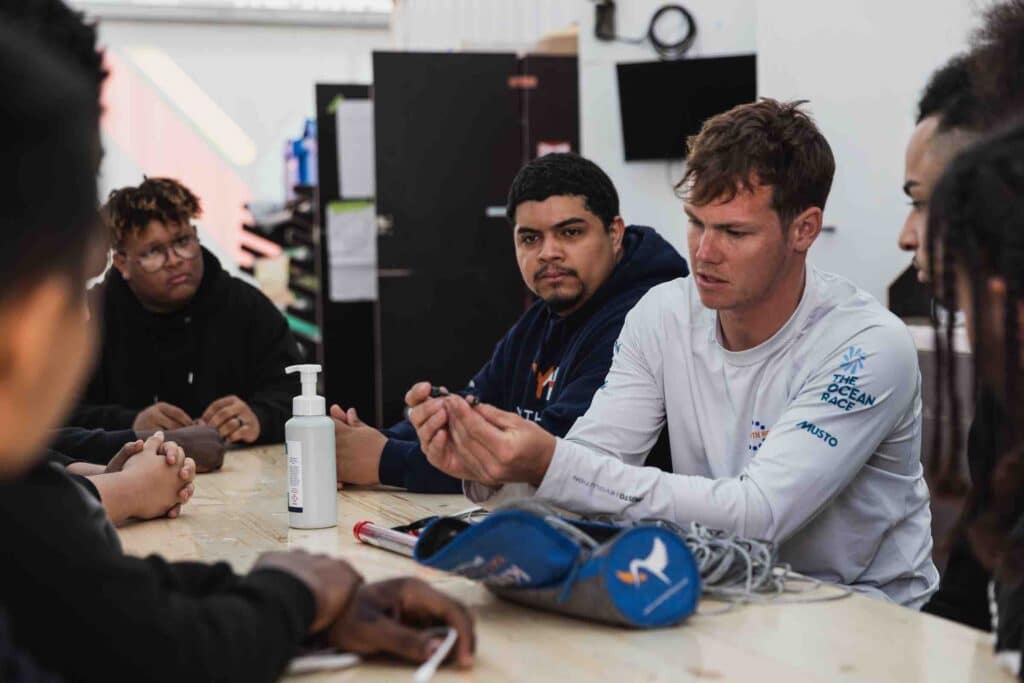
REVISITING THE OCEAN RACE STOPOVERS THROUGH A DIFFERENT LENS
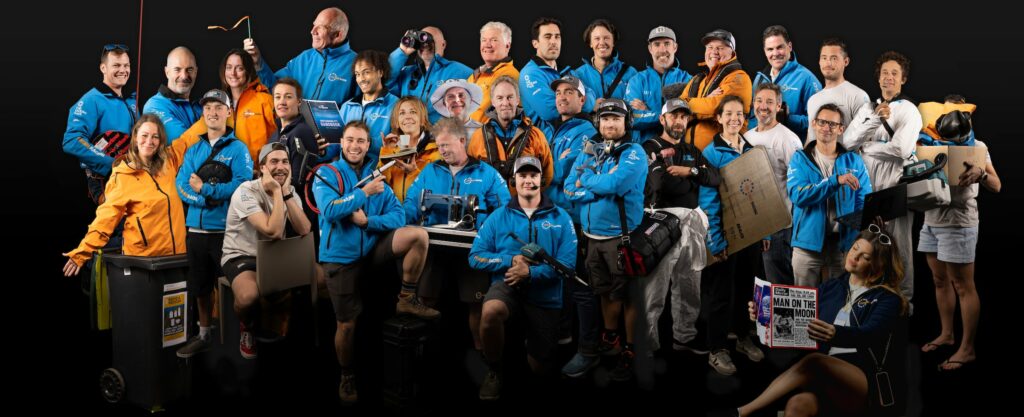
December 15, 2023
WHEN THE DUST SETTLES – By Mark Towill and Charlie Enright
Privacy overview.
Yacht Design
- Architecture
IMOCA 60 Class Yacht
“Diploma of the Year 2018” award for the best Master’s Degree thesis project.
Comparison of yacht design methods on the basis of IMOCA 60 class yacht design.
Gdansk University of Technology, faculty of Ocean Engineering and Ship Technology.
Concept Design

Sailing Machine
IMOCA 60 class yacht concept design.
The yacht is “a sailing machine” for a solo circumnavigation. It can sail though the most dangerous ocean areas of the Earth. Catching West Winds it can reach a speed up to 30 knots. A yacht movement is between sailing, surfing and flying.
On the basis of IMOCA 60 design I analyzed and compared design methods in widely understood design to implement them to yacht design.

Design Modules
- analysis of route
- class rugulations
- prediction of hull resistance
- space division and yacht exterior design
- design of sails
- structure calculation
- evalutaion of center of gravity
- stability analysis and VPP.

Features & Software
The hull of IMOCA 60 class yacht has features of speed vessels like: chine, redans and wide stern.
The bow and sides of the hull were shaped to minimize the mass of the structure, to damp pitching and to allow smoother ride on the waves.
Large sailing area is balanced by canting keel and foils.
Software: Rhino 3d, Orca 3d, Maxsurf, ZWCad.
IMOCA 60 class yacht sails
- GR – Main Sail
- J1, J2, J3 – Jib
- GKH – Heavy Gennaker
- GK – Gennaker
- SJ – Storm Jib
Material used for sails:

Design and management of projects at international level with a strategic approach for design studios, shipyards and investors to open up new possibilities by design, so they can build and grow their business.
- Mobile Site
- Staff Directory
- Advertise with Ars
Filter by topic
- Biz & IT
- Gaming & Culture
Front page layout
looks like hard work! —
This 32,000-mile ocean race has yachts doing research along the way, the yachts will sample ocean gases and microplastic levels along their route..
Jonathan M. Gitlin - Jan 23, 2023 5:20 pm UTC
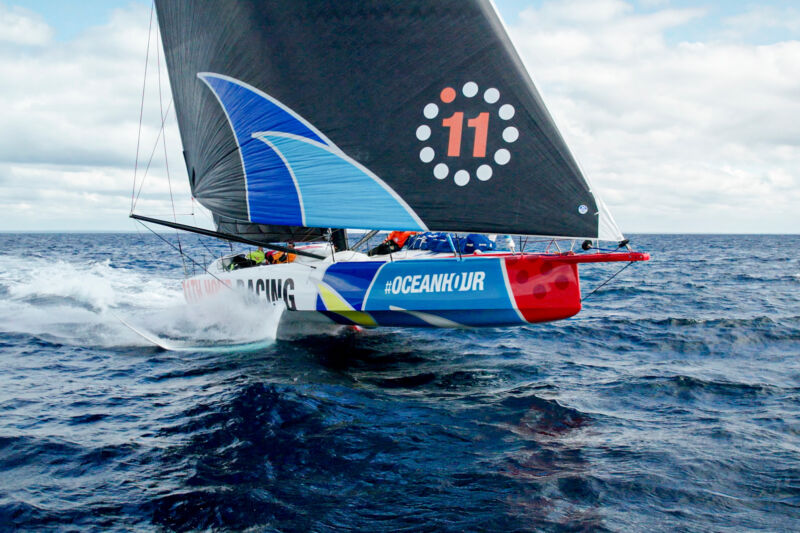
Just over a week ago, one of the world's most grueling races got underway from Spain. Eleven teams, including five International Monohull Open Class Association (IMOCA)-class racing yachts, departed Alicante in Spain for the first leg of a 32,000-nautical-mile (60,000-km) route that includes a 12,750-nautical-mile stretch between South Africa and Brazil through the Southern Ocean. The crews have little in the way of creature comforts beyond freeze-dried meals and a bucket for a bathroom. Along the way, the boats will collect scientific data on the state of our oceans, from dissolved gases like oxygen and carbon dioxide to microplastics.
IMOCA-class boats are 60 feet (18.3 m) long and feature a single hull made from carbon fiber. In addition to sails, the yachts have retractable foils that lift the hull out of the water above 18 knots (33 km/h) and allow a top speed of 35 knots (65 km/h) or more. Designers have some freedom with the hull and sail shape, but everyone has to use the same design of masts, booms, and static rigging.
Mālama is one such boat, and it's crewed by the 11th Hour Racing team. In addition to collecting data on climate change, the team worked to minimize the carbon impact of building the yacht itself , experimenting where allowed with lightweight, sustainable materials like balsa or composites made from flax. "I like to think of where can we use renewables that actually adds performance to the program," said Simon Fisher, navigator for the 11th Hour team.
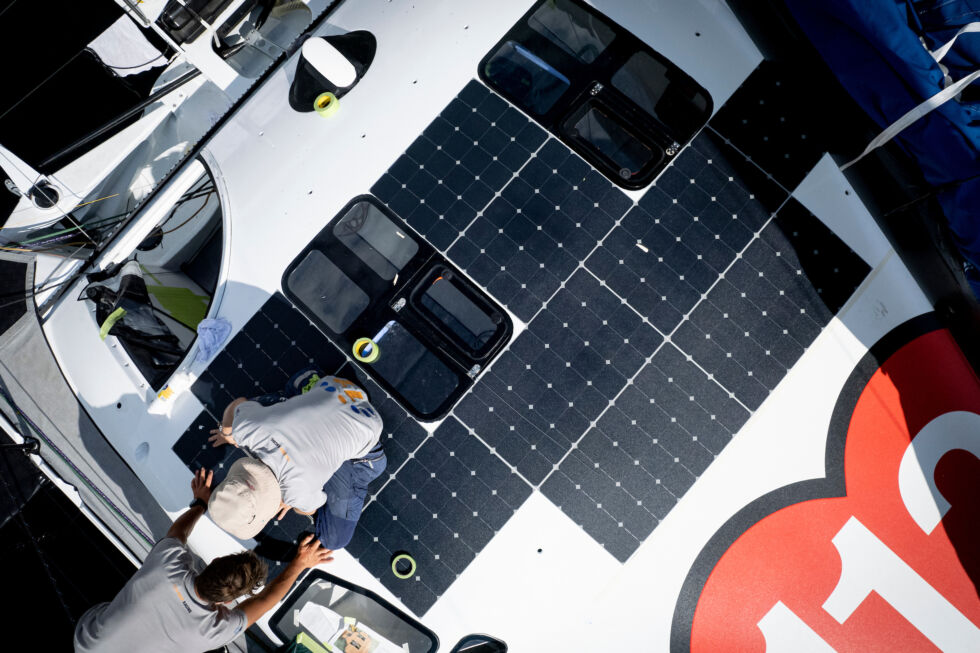
"The renewable energy we use on board is a good example of that," Fisher explained, referring to Mālama's solar panels, which charge its 48 V battery and save a lot of weight versus the more traditional approach of a diesel generator and its required fuel. "That's a considerable weight saving, and we're always chasing everything down to the last gram," he said.
"If you come on board the boat and looked at a lot of the non-structural elements, things like engine covers, which traditionally would be made out of carbon, are now done in flax and bioresins and all that sort of stuff. And we've actually done that in the build process. We took the time to build some samples and compare weights and durability," Fisher said.
Much of that is detailed in 11th Hour's sustainable design and build report (PDF), which describes "the amount of detail that went into measuring absolutely everything," Fisher told Ars. "So every element that went into the boat—what it was made from, the energy use, where things are sourced from, all of that—has been incredibly well-documented." As such, the team hopes the data can be useful to the rest of the industry.
- Carbon fiber is very energy-intensive because it needs to be cured in an autoclave under heat and pressure. Amory Ross / 11th Hour Racing
- Panels made using flax and power ribs, alternative boat building materials. Amory Ross / 11th Hour Racing
The IMOCA rules require boat-builders to use energy-intensive carbon fiber as the main material thanks to its high strength and light weight. But here and there, 11th Hour found ways to reduce its carbon impact. Reusing carbon fiber molds, for example, saved more than 170 metric tons of CO 2 from the boat's footprint. "There's been some really good and actually surprisingly simple lessons that came out of it. One of the biggest savings in carbon footprint we've made is that the whole boat was built on renewable energy. So the boatyard that the boat was built on was on a renewable energy tariff, and that's like half the carbon footprint," Fisher said.
reader comments
Channel ars technica.
Yachting World
- Digital Edition

Charal: On board the radical IMOCA 60 that takes foiling to the next level
- Helen Fretter
- July 22, 2019
Charal is a next-generation foiling IMOCA 60, designed by VPLP and newly launched for solo skipper Jeremie Beyou
In St Malo for the start of the Route du Rhum in early November , every inch of the IMOCA 60 pontoons was packed with fans trying to get a close up look at the huge variety of designs taking part.
But one boat needed serious crowd control around it – Charal , the aggressively styled foiling design launched just a couple of months earlier. The scale of Charal ’s foils alone would have drawn attention, but videos of Beyou test sailing his new boat literally leaping from the water made Charal a hot topic in St Malo. We talked to designer Vincent Lauriot-Prévost of VPLP about the concepts and technology behind it.
Charal is not just the newest IMOCA 60, she marks a ‘next generation’ step for the class because she is the first IMOCA 60 designed entirely around the foils.
Most of the IMOCA 60s carrying foils in the 2016 cycle were retrofitted with them. Even those that were built anew were designed to be competitive without the foils ( Alex Thomson ’s Vendée Globe 2nd place after shearing the starboard foil less than two weeks into the race proving the sense of this policy). In truth, nobody really knew if the foils would be reliable and effective across enough of the wind ranges experienced in a round the world solo race.
“In the last edition of the Vendée we proved foils on the conventional boats, which were on boats designed for power and righting moment,” explains Vincent Lauriot-Prévost.
The results of the last Vendée Globe: 1st Banque Populaire , 2nd Hugo Boss , Maitre Coq 3rd, all VPLP-Verdier foiling designs, proved conclusively that this was the future of the class. So for Charal , VPLP took a different approach.
Article continues below…

Why do the new Vendee Globe IMOCA 60 yachts have foils?
Foils are the newest phenomenon on the Vendée Globe race and one that looks as if it is set to…

Record fleet sets off for 40th Route du Rhum, with 40-knot conditions forecast
Along a three-mile start line off St Malo, 123 boats set off on the 40th Route du Rhum singlehanded transatlantic race…
“We have decided to make the new boat as a pure foiler. Instead of looking for a powerful hull we are looking for a less draggy hull, taking into account that the foils are going to be the element that gives the power.”
This means a big shift from trying to balance weight reduction and power, to working towards a lightweight and minimum drag hull form. One of the challenges has been that the new generation foil packages – longer foils, and casings that are stronger and more complex – come with a weight increase.
“We know that all-in the package of the new foils, including the reinforcement of the hull and so on, are just about half a tonne extra weight [over the last generation foils],” explains Lauriot-Prévost. “So how can we make the boat half a tonne lighter to compensate for this?”

Charal can be up on her foils in just 15 knots of wind. Photo: Damien Meyer / AFP / Getty Images
Hull volume has been reduced wherever possible, retaining it forward and amidships but cutting away great angular sections of bow and topsides, then sloping down to a low transom to create what Lauriot-Prévost describes as ‘a very bumpy sheer’.
Overall, the changes are significant and achieving them while remaining within the IMOCA stability rule was a challenge. “The hull is completely different. It’s a narrower waterline – we don’t want to be a cigar, but we accept to lose 15-20% of righting moment to be within the stability rule,” explains Lauriot-Prévost.
During the design process they discussed with the Charal team whether they wanted the boat to remain competitive even if they lost a foil (as did Thomson). The decision was made that the boat would not be have enough power to be seriously competitive in non-foiling mode – although it would be stable enough to be safe.
The scale of Charal ’s foils is impressive – they are wider than any other boat’s so far, with a long shaft and tip and an angled elbow. They are also surprisingly thick. The trade-off for the increased foil size and power is that they cannot both be retracted simultaneously.

The size of Charal ’s foils mean that they cannot both be raised at the same time
“We accept [we can’t] have them fully up at the same time, because we want them big. We want to create the righting moment as far out of the hull as possible, and we want a foil which creates vertical lift but which creates side force at the same time,” says Lauriot-Prévost. The shaft creates vertical force, while the oversized tip generates lateral and vertical forces.
The other key difference is that these latest generation foils have adjustable rake, using bearings fore and aft, which allow Beyou to alter the angle of attack by 5°.
How frequently the rake will be adjusted remains something to be explored but, says Lauriot-Prévost: “You can imagine maybe that instead of playing with sail sheets you play with the foil controls, and tune the boat to the reaction in the water more than the reaction of the sail forces.”
There is one significant limitation to the power even the latest generation IMOCA 60 can generate: the class-restricted rig. “There is one fuse on the boat, which is the mast,” explains Lauriot-Prévost. “The mast has been designed for [loads of] 32 tonne metres (Tm) and fully foiled, fully canted, fully raked and fully ballasted we are more 43-45Tm.”
Finding the limits

The pedestal grinder is placed right in the centre of the pit area for direct connection to winches
To monitor these loads, Charal is covered with fibreoptic sensors; five per foil with additional sensors in the foil rake adjustment bearings, as well as on the outriggers and backstay.
“During the trials it happened several times that we had alarms, because we were overloaded compared to the designed load,” says Lauriot-Prévost.
Given that potential, the adoption of the IMOCA 60 class by the Volvo Ocean Race will be a serious test of restraint. “That’s a really strong discussion that we had with the Volvo teams, because the Volvo teams have not got the same approach as a single-handed sailor, and when they push, they push!”
The other limiting factor is of course the human on board. As with any IMOCA 60, Charal has been customised around her skipper, the hugely experienced Jérémie Beyou, and his personal preferences.
“One thing which is evident on this boat is that Jérémie doesn’t want to stack the sails inside,” says Lauriot-Prévost. To make moving the sails on deck easier, there is a sloped scoop abaft the cockpit.
The cockpit is sheltered by a fixed cuddy made with Mylar film windows rather than a retractable coachroof – sliding components would be heavier. A pedestal grinder is placed under the cuddy, right in the middle of the pit.
To keep weight low all the lines coming from the bow or mast base are led through two tunnels to the pit area. The pit area has four in-line winches, directly connected to the pedestal for the easiest transmission system possible, with no gearbox or T-junctions necessary. This offers big savings in weight and complexity, but does make for a very compact working area.

The 2018 Route du Rhum was Beyou’s first racing test for Charal – he retired with steering issues. Photo: Charal Sailing Team
“You do end up with a cockpit that is not designed for crewed sailing, at all!” points out Lauriot-Prévost. Down below was out of bounds – the inner workings of Charal’s foil controls are too new to be shared.
Many of the IMOCA skippers have talked about wearing helmets or body armour on the new foiling 60s, so extreme is the motion. Was protecting the skipper a factor in the design?
“It’s going to be the priority before the start of the Vendée,” says Lauriot-Prévost, “But Jérémie needs to find out where it is important to protect. He needs to get a bit bruised first!”
Specification
LOA: 18.29m (60ft 0in) Beam: 5.60m (18ft 5in) Draught: 4.50m (14ft 9in) Displacement: 7.40 tonnes Sail area upwind: 300m² (3,229ft²) Sail area downwind: 600m² (6,458ft²)
First published in the Jan 2019 edition of Yaching World – Charal is due to take part in next month’s Rolex Fastnet Race .
This website uses cookies . This allows us to offer you the necessary functionalities and also improve your user experience. If you visit our website, you agree to the cookie statement
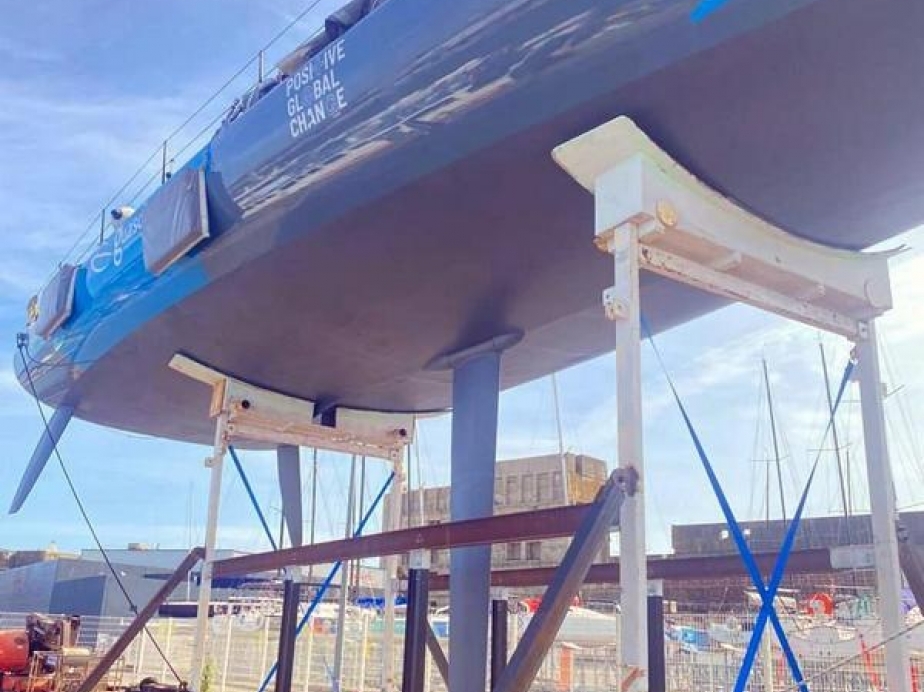
€199,000
VAT excluded
- Reference ID 660
- Builder IMOCA
- Humphreys / Owen Clarke design
- Location Spain
- Engine type Single
- L.O.A. (mtr) 18.28
- Beam (mtr) 5.20
- Draft (mtr) 4.50
- Displacement (Kg) 8500
- Material Composite
- Engine LOMBARDINI (2020)
Send to friend
Yacht description.
For sale after a complete refit and preparation for Vendée 2020/2021. Ex Kingfisher - 2000 Owen Clarke design built at Marten Yachts in NZ. Major awards including 7 world tours (VG 2020, 2016, 2004, 2000 and BWR 2007, 2010, 2014)
Ideal and very reliable boat for a new Vendée Globe 2024 project. Boat complete with lots of spare material. Easy to use
Check ups/tests
- Ultrasonic test + survey Futures Fibers (Done by David Barnaby)
- FIX mast 7/8 in carbon 3 spreaders levels, length: 26,5m - 416 Kg
- Standing rigging: Future Fibers: PBO 2020, mast surveyed in June 2020
- Ultrasound special test and validity for high performance racing
Refit/renewal/maintenance 2020/2021
- New Lombardini engine
- Ballast modifications
- Cockpit modification
- Removal of old daggerboards
- Keel, jacks, hydraulics
- Latest generation electronics B&G H5000
- Complete sanding of the boat and new painting
- Substantial weight gain (about 800kg)
- Quantum Sails 2020 sail set (MS, J1,5, J2, J3, FR0, A5)
- 2020 Imoca Class Certificate
- PBO 2020 rigging
- Mastervolt lithium batteries
- Hydrogenerators
- Solbian Solar Panels
- Ultrasonic mast and boom test June 2020
- Evolutions still possible with a consequent gain in performance (new mast, angled daggerboards/foils, bow, etc.).
CONSTRUCTION :
- Hull: Epoxy Carbon Nomex and Airex core sandwich
- Superstructure: Epoxy Carbon Nomex and Airex core sandwich
- Deck: Epoxy Carbon Nomex and Airex core sandwich
- Hull: Grey / Blue
- Superstructure: Grey / Blue
- 29m Southern Spars carbon mast
- Carbon boom
- Standing rigging: PBO (Future Fibers)
- Runnig rigging: LANCELIN and MAFFIOLI
- Furlers: Profurl
- Main Genoa Solent (QUANTUM)
- Jib Staysail
- A2 -A3 Fractional
- Main North Sails 3DL
- J2 North Sails
- A5 North Sails
- Code 0 Incidences
- A2 Incidences
- J3 Incidences
- J1 North Sails
- A5 incidences
- Storm sail Incidences
Accommodations
- Nav station with all the electronics near by
- 4 single bunks
- Heater: Webasto
- Small galley with sink and gas burner stove
- Water Tanks
- Bilge pumps
- Water maker Katadyn
Deck and Cockpit
- HARKEN winches, 5x
- 1 pedestal
- SPINLOCK jammers
- Full IMOCA jauge mooring
- Spare anchor + chain and rope
- 2x Alternator
- 1 x 100 Amp MEGA LIGHT Gel for engines start, AGM 2020
- 2 x 170 Amp MEGA LIGHT Gel for service, Lithium Mastervolt 2020
- Hydrogenerator X2
- Battery charger mastervolt
- LOMBARDINI 30 HP (2020)
- 7,5 knots cruising speed
- Consumption: 4L/hrs
- Saildrive and racing propeller
- Fuel Tanks: 150 L
Electronics and Navigational Gear
B&G H5000
- Self-steering: 3 autopilots
- Gyrocompass: B&G
- AIS Class B: B&G
- Computer: one computer system with Adrena Software, one for communications
- Screens: 17"
- Iridium phone
- VHF radio: B&G
- meteo: VION barometer
- GPS: B&G
- 1 container
Company offers the details of this vessel in good faith but cannot guarantee or warrant the accuracy of this information nor warrant the condition of the vessel. A buyer should instruct his agents, or his surveyors, to investigate such details as the buyer desires validated. This vessel is offered subject to prior sale, price change, or withdrawal without notice.
Contact Details
- Name Site Broker | Racing-Yachts.com
- Email [email protected]
- Phone 1234567
- Instagram -
Featured Yachts For Sale
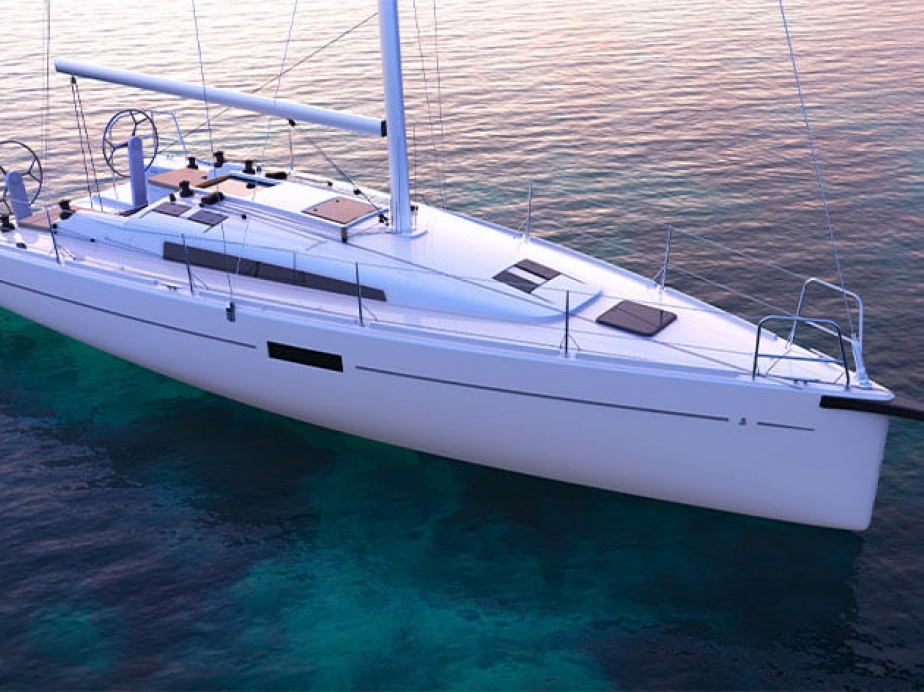
- Displacement (Kg): 4800
- Beam (mtr): 3.80
- L.O.A. (mtr): 11.98 Meters
- Horsepower: 29 hp
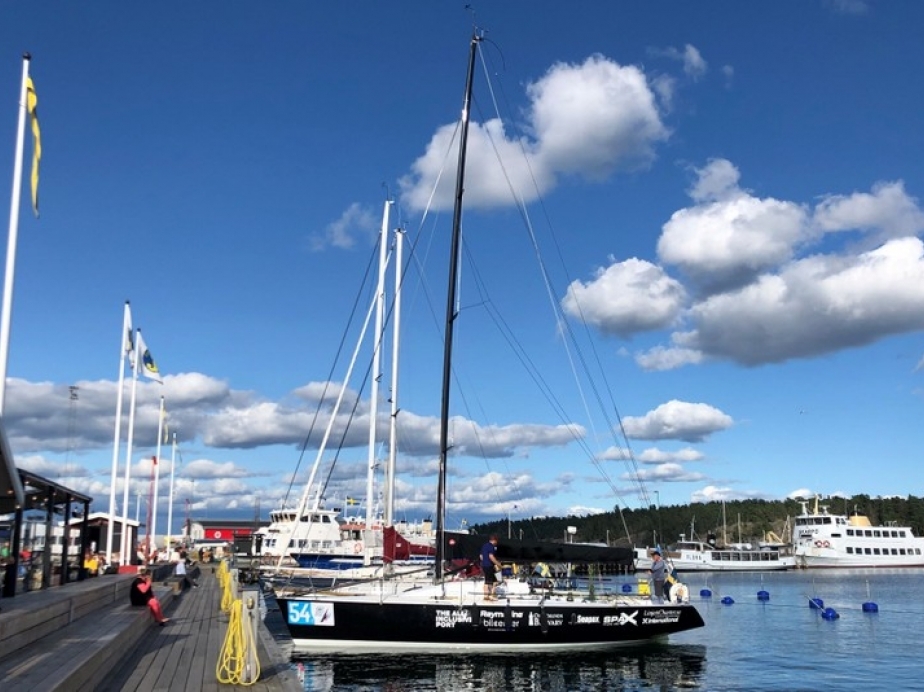
- L.O.A. (mtr): 11.97 Meters
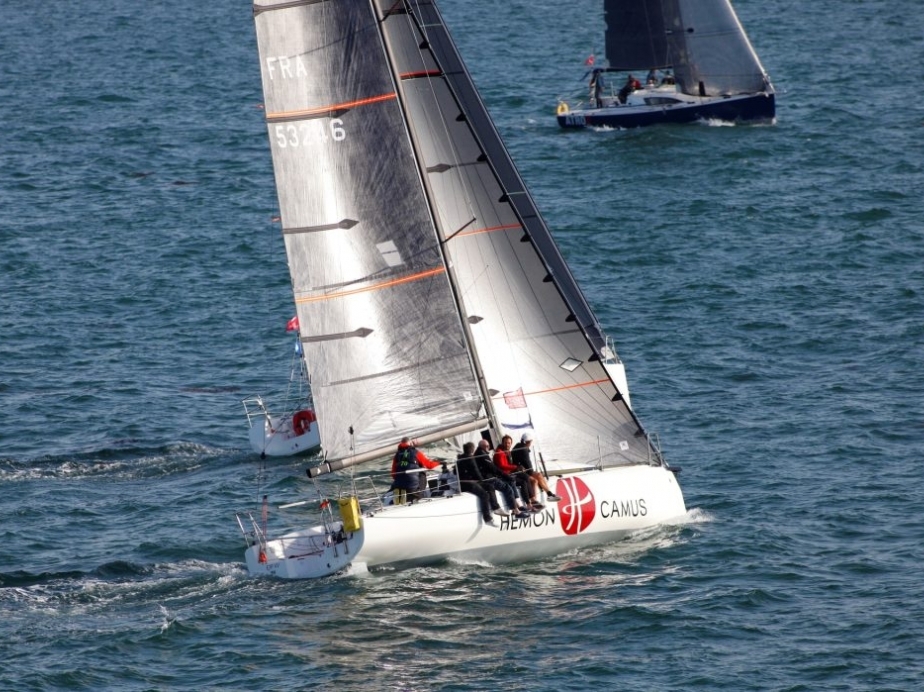
- Displacement (Kg): 3500
- Beam (mtr): 3.40
- L.O.A. (mtr): 10.00 Meters
- Horsepower: 14 hp

IMAGES
VIDEO
COMMENTS
Main criteria for the IMOCA class ... These 60-footers really came into being in 1986, during the second edition of the BOC Challenge where five monohulls were reasonably proportioned at 18.28 metres (60 feet). ... With a minimum of twenty boats at the start of the Vendée Globe since 2000, today IMOCA is the biggest offshore class in the world
The IMOCA ("Open 60"), is a 60ft (18.288 m) development class monohull sailing yacht governed by the International Monohull Open Class Association (IMOCA). The class pinnacle event are single or two person ocean races, such as the Route du Rhum and the Vendée Globe and this has been intimately linked to design development within the class.
The IMOCA 60 machines, such as 11th Hour Racing's Mālama, are foiling capsules designed for faster downwind runs in stronger wind. Amory Ross / 11th Hour Racing. New boats in the IMOCA class ...
The new PRB IMOCA 60 is one of the latest to launch in a flurry of new launches. Originally designed for The Ocean Race, it will be Kevin Escoffier's boat for the next Vendée Globe. As if the new ...
Aero package. Above the waterline a lot of effort has gone into improving aerodynamics on the 11th Hour Racing IMOCA 60 - given the high apparent wind speeds of these boats this area is now ...
The IMOCA 60 Malizia-Seaexplorer is the world's fastest monohull, having set a blistering 24-hour record of 641.08 nautical miles while competing in The Ocean Race transatlantic leg. Followers ...
Boris Herrmann's "Malizia - Seaexplorer" is the most modern, radical IMOCA ever built for a German. What makes this boat class special
IMOCA stands for International Monohull Open Class Association. IMOCA 60 sailing boats are an 'open class' which means that designers can modify the design of the boat within certain limitations. The boat can be no longer than 60 feet in length, 4.5 meters draught and a maximum mast height of 29 meters above the waterline.
The Ocean Race 2021-22 (formerly The Volvo Ocean Race) will be raced in two classes of boats: the high-performance, foiling, IMOCA 60 class and the one-design VO65 class which has been used for ...
Sailing Yacht. Last week has seen a boat launch of the superlatives. The long expected new design of renown bureau VPLP and the much anticipated "re-definition" of IMOCA 60-class racing yachts has hit the waters. The all new CHARAL by French Charal sailing team under the command of pro-skipper Jeremie Beyou had her roll out from the yard´s ...
The IMOCA 60 Class yacht Charal was designed by VPLP Design Office in partnership with Gurit for the structural design. The boat was launched on the 20th August 2018 after being assembled by CDK Technologies based Port La Forêt, Lorient in France. The boat was very much a multinational project with hull mould constructed by SRG in Spain, and the deck mould Green Marine in United Kingdom. The ...
Find Custom Imoca 60 boats for sale in your area & across the world on YachtWorld. Offering the best selection of Custom boats to choose from. ... Class. Power. Power-all-power. All power. Power-sports-cruiser. Sports Cruiser. Sail. Sail-all-sail. All sail. Sail-racer. ... 2000 Custom IMOCA 60. US$185,135. ↓ Price Drop. Ocean Racing Brokerage ...
The basic parameters are that all IMOCA 60s must be between 59 and 60 feet (18m) hull length (66ft/20.12m LOA) with a maximum draught of 4.5 metres (15ft.) Other parameters include a maximum mast ...
Tax not paid / excluded. 2000 | 18.28m | Sail. All boats from Cruiser Racer. Contact Seller. Search all our new or used IMOCA 60 for sale. We have IMOCA 60 brokers and sellers from around the world at great prices. Used IMOCA 60 for sale from around the world. Search our full range of used IMOCA 60 on www.theyachtmarket.com.
A 60-foot boat, traditionally designed for single- or double-handed sailing, IMOCA is an open class offering the freedom to design boats to be as light as possible to favor speed, while also being solid enough to withstand the worst possible ocean conditions. With the introduction of foils in 2015, the Class saw a dramatic leap in performance ...
The IMOCA 60 Class is an 'open' design, measurement-controlled class - allowing designers freedom within the rules. Latest generation boats have foils, which dramatically increase the speed of the boat as it 'skims' over the water's surface. The Cockpit.
The hull of IMOCA 60 class yacht has features of speed vessels like: chine, redans and wide stern. The bow and sides of the hull were shaped to minimize the mass of the structure, to damp pitching and to allow smoother ride on the waves. Large sailing area is balanced by canting keel and foils. Software: Rhino 3d, Orca 3d, Maxsurf, ZWCad.
IMOCA-class boats are 60 feet (18.3 m) long and feature a single hull made from carbon fiber. In addition to sails, the yachts have retractable foils that lift the hull out of the water above 18 ...
Charal is not just the newest IMOCA 60, she marks a 'next generation' step for the class because she is the first IMOCA 60 designed entirely around the foils. Most of the IMOCA 60s carrying ...
Farr Yacht Design, ... Downwind sail area: 620 m 2 (6,700 sq ft) Racing; Class association: IMOCA 60 [edit on Wikidata] The IMOCA 60 Class yacht FRA 101 - Foncia designed by Farr Yacht Design and launched in the year 2007. Names and Ownership. Foncia (2007-2009) Skipper: Michel Desjoyeaux; TC2.
IMOCA 60. Print to PDF. €199,000. VAT excluded. Reference ID 660; Builder IMOCA; Model 60; ... 2000 Owen Clarke design built at Marten Yachts in NZ. Major awards including 7 world tours (VG 2020, 2016, 2004, 2000 and BWR 2007, 2010, 2014) ... 2020 Imoca Class Certificate; PBO 2020 rigging; Mastervolt lithium batteries; Hydrogenerators;